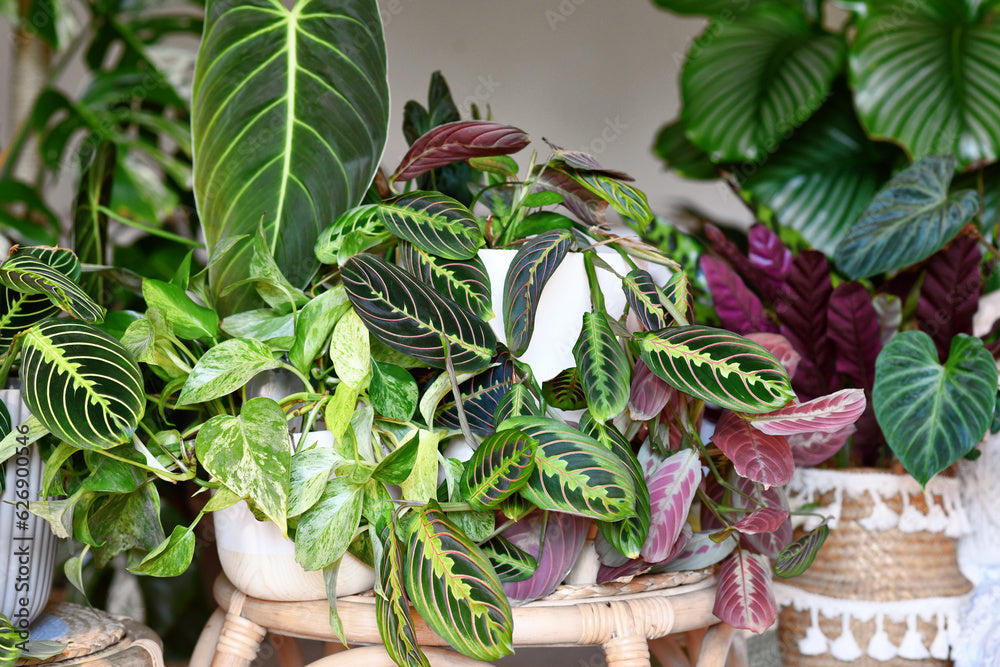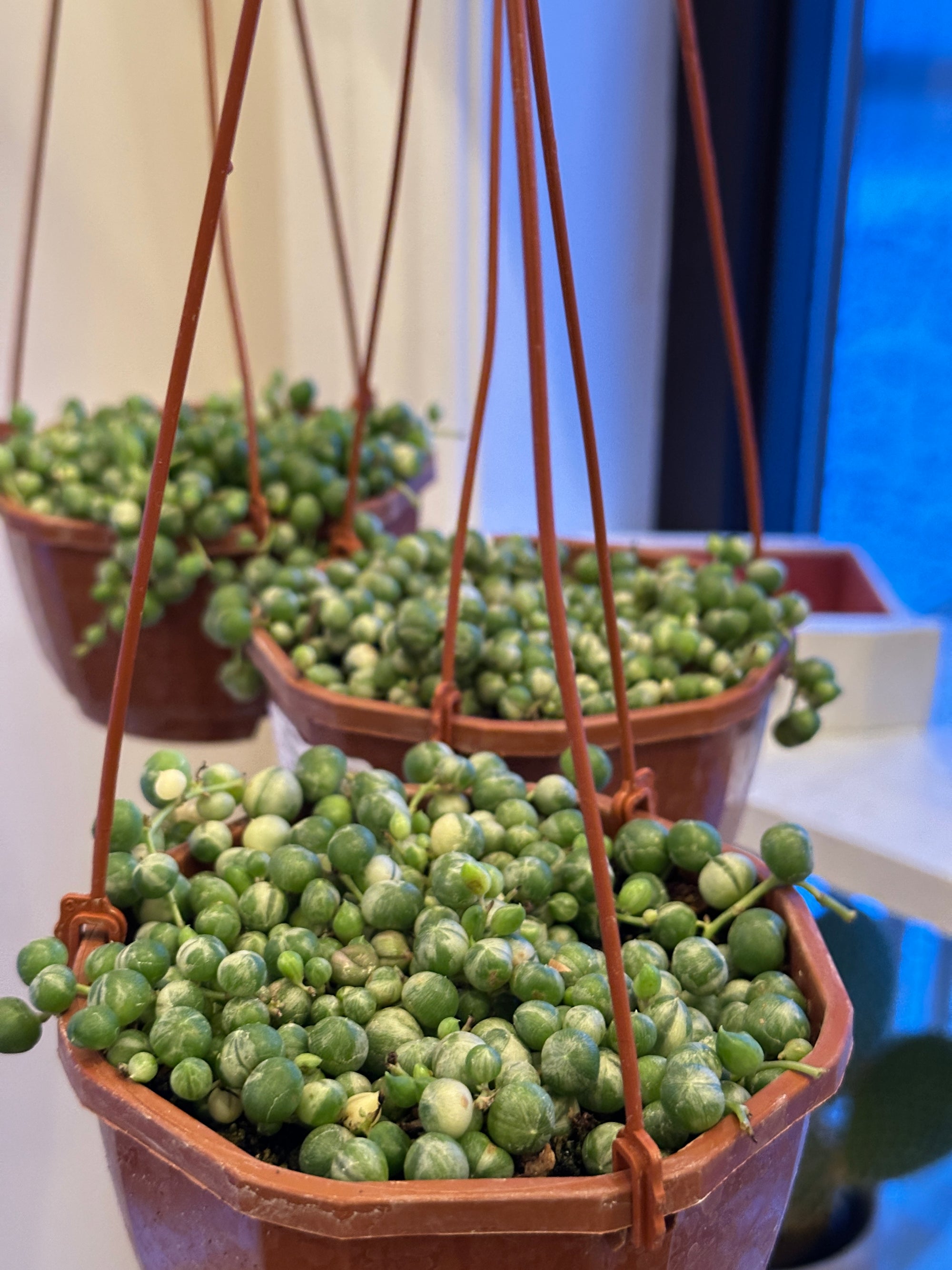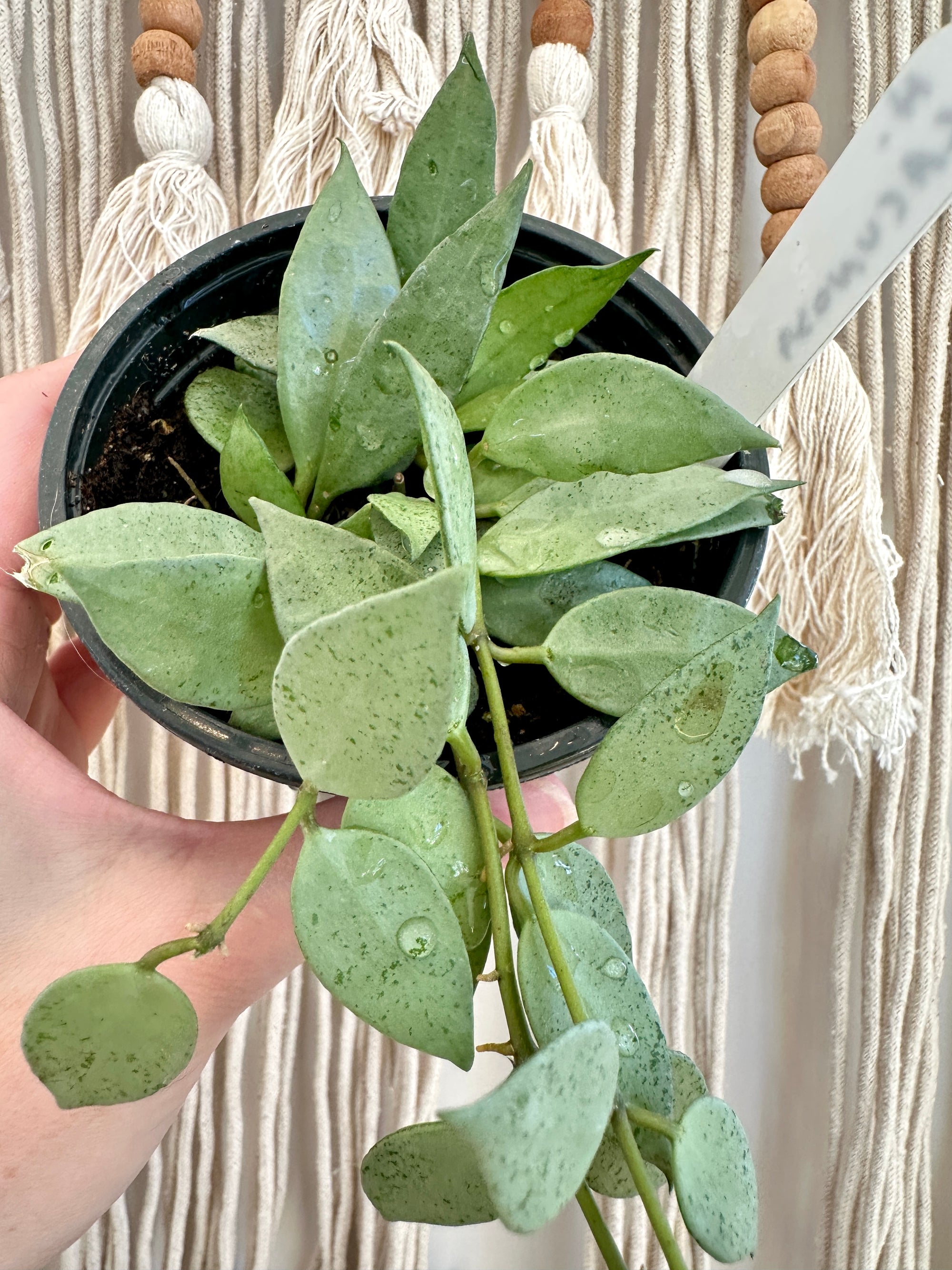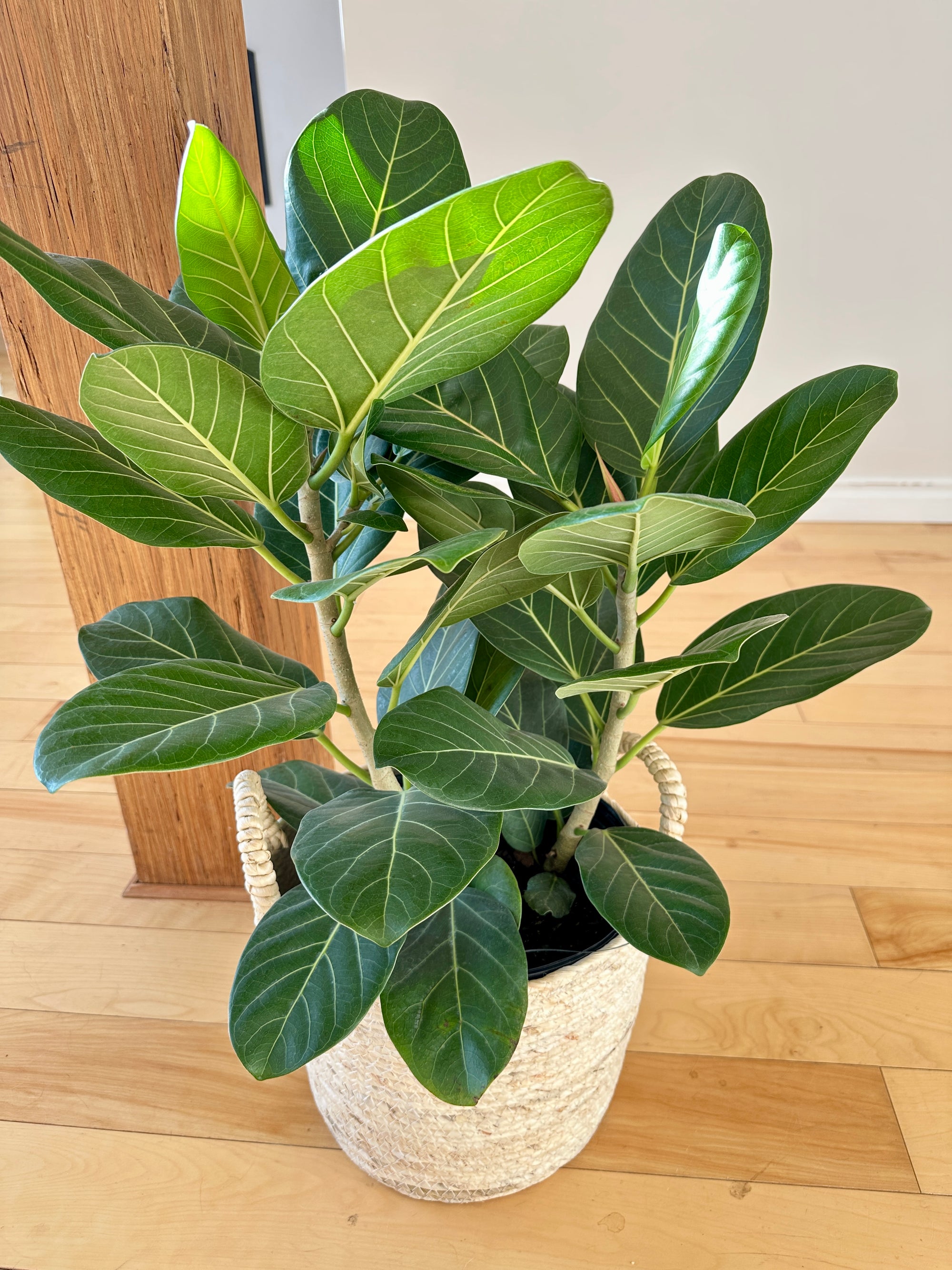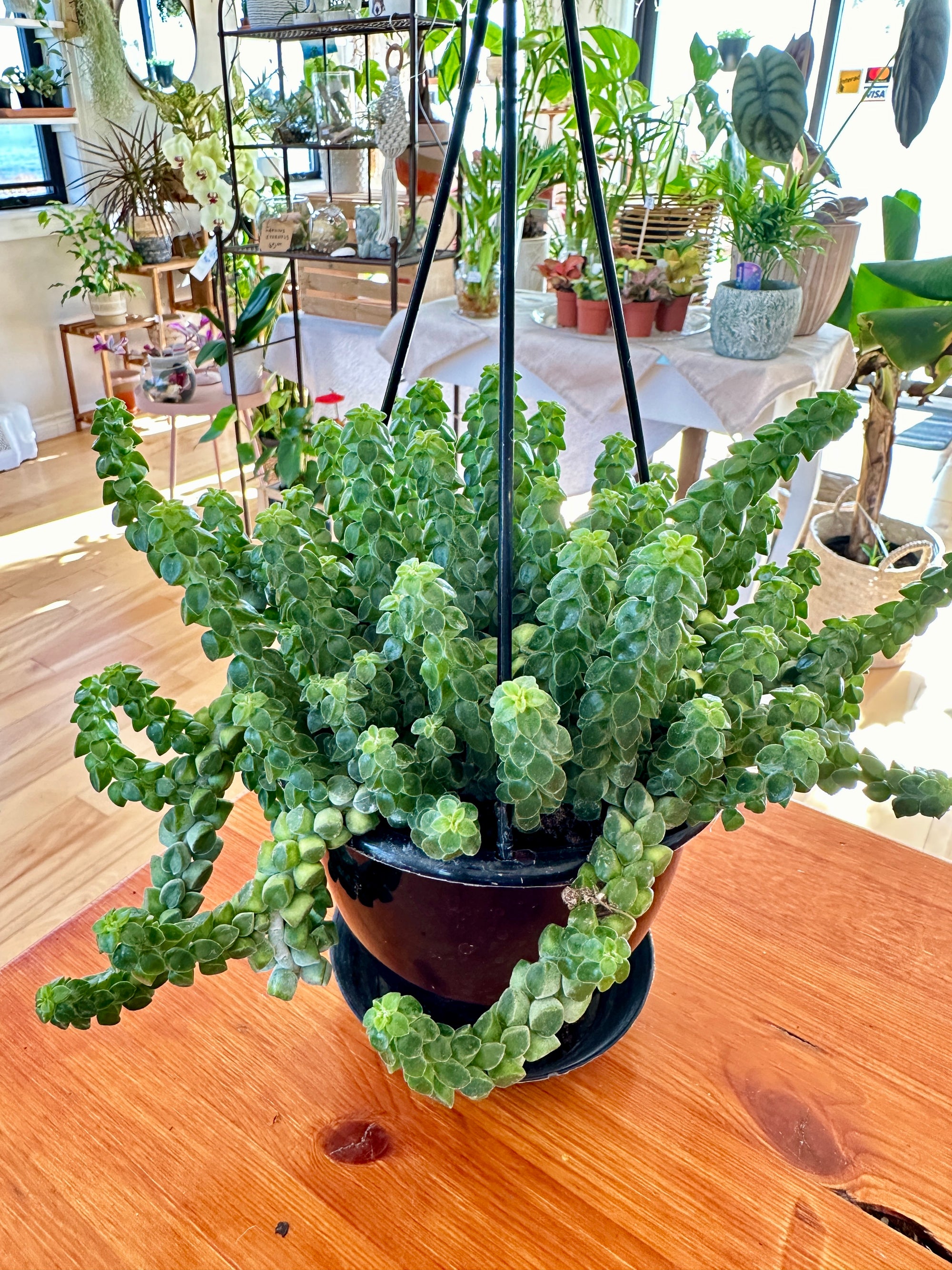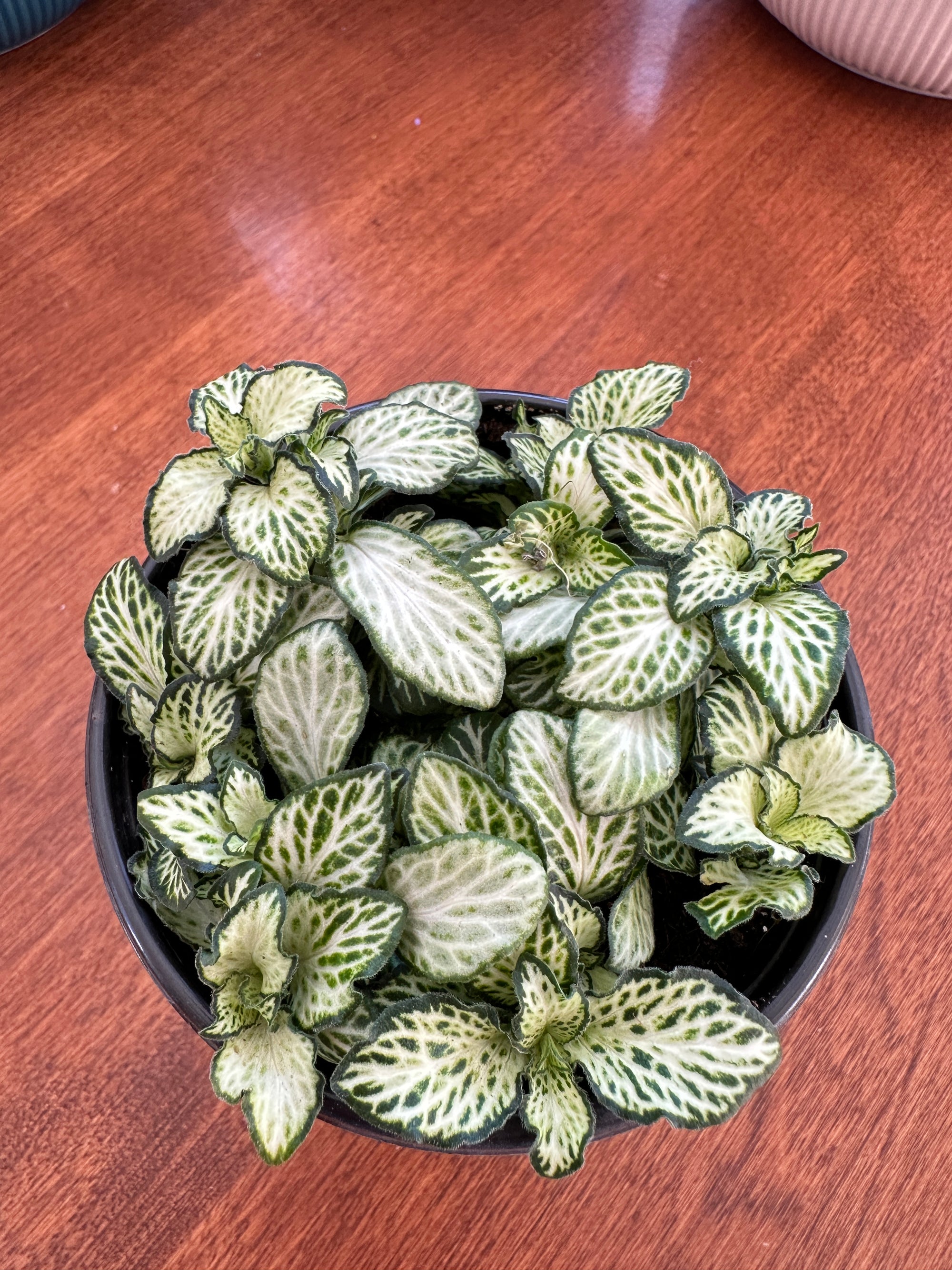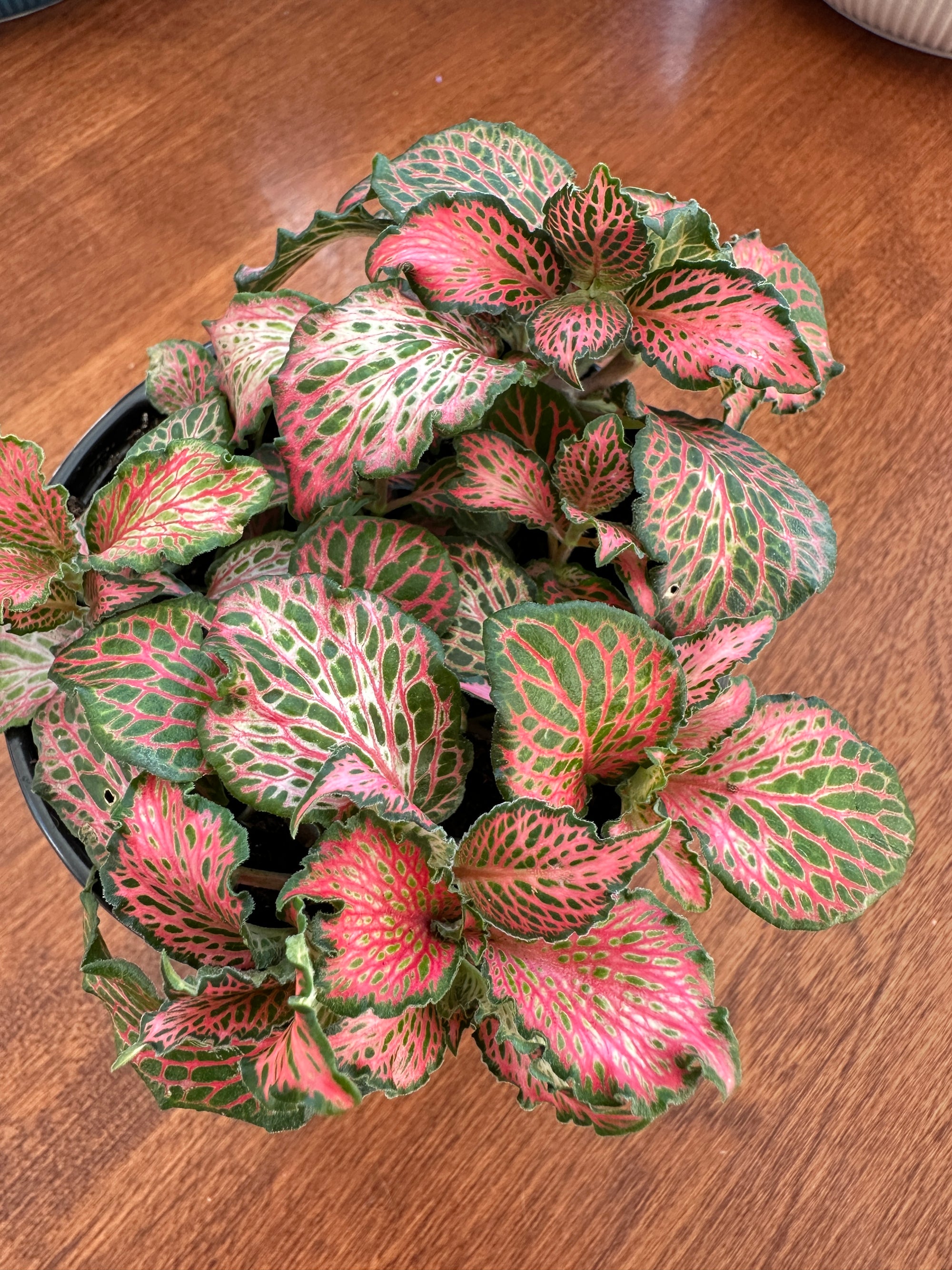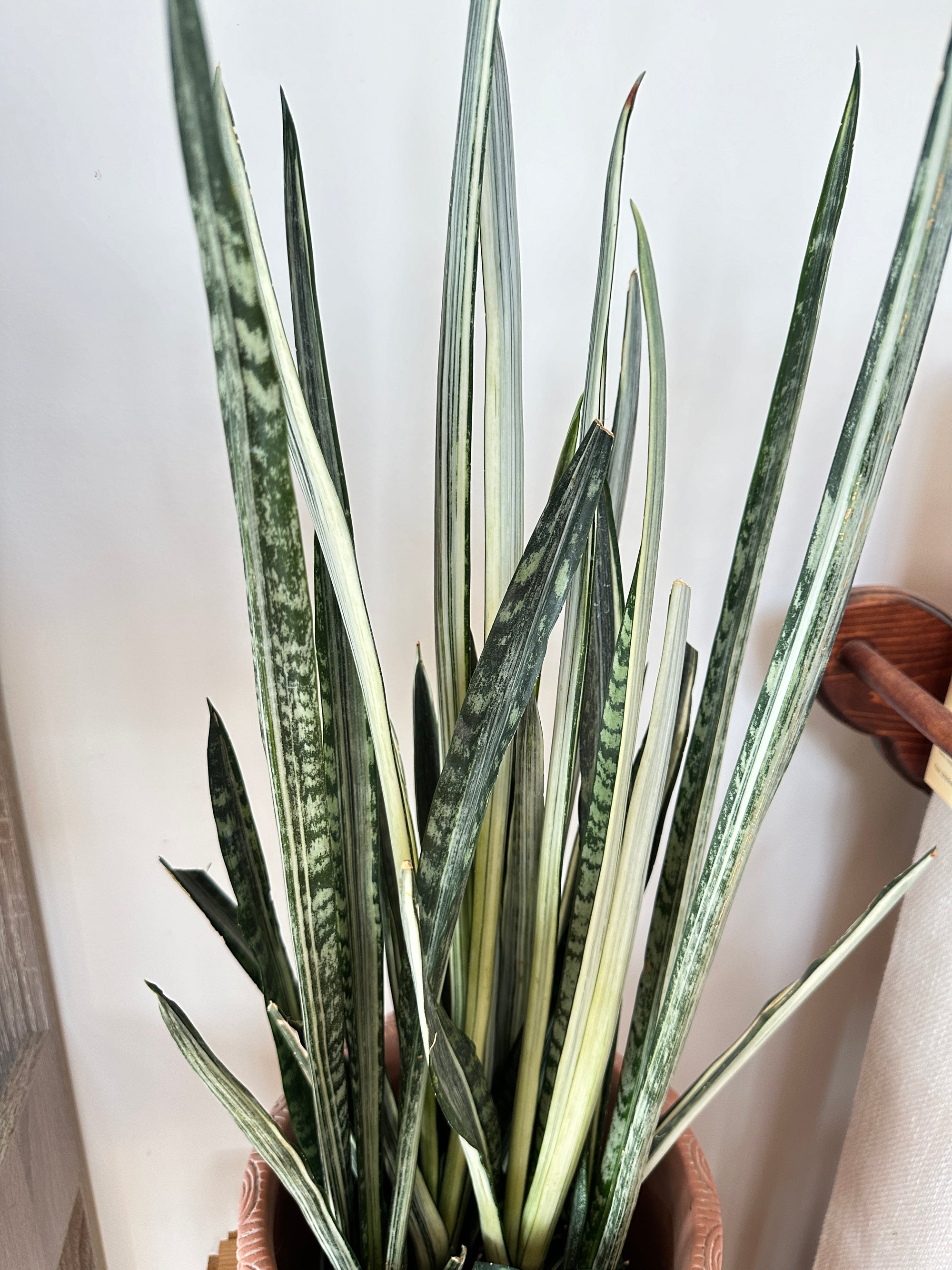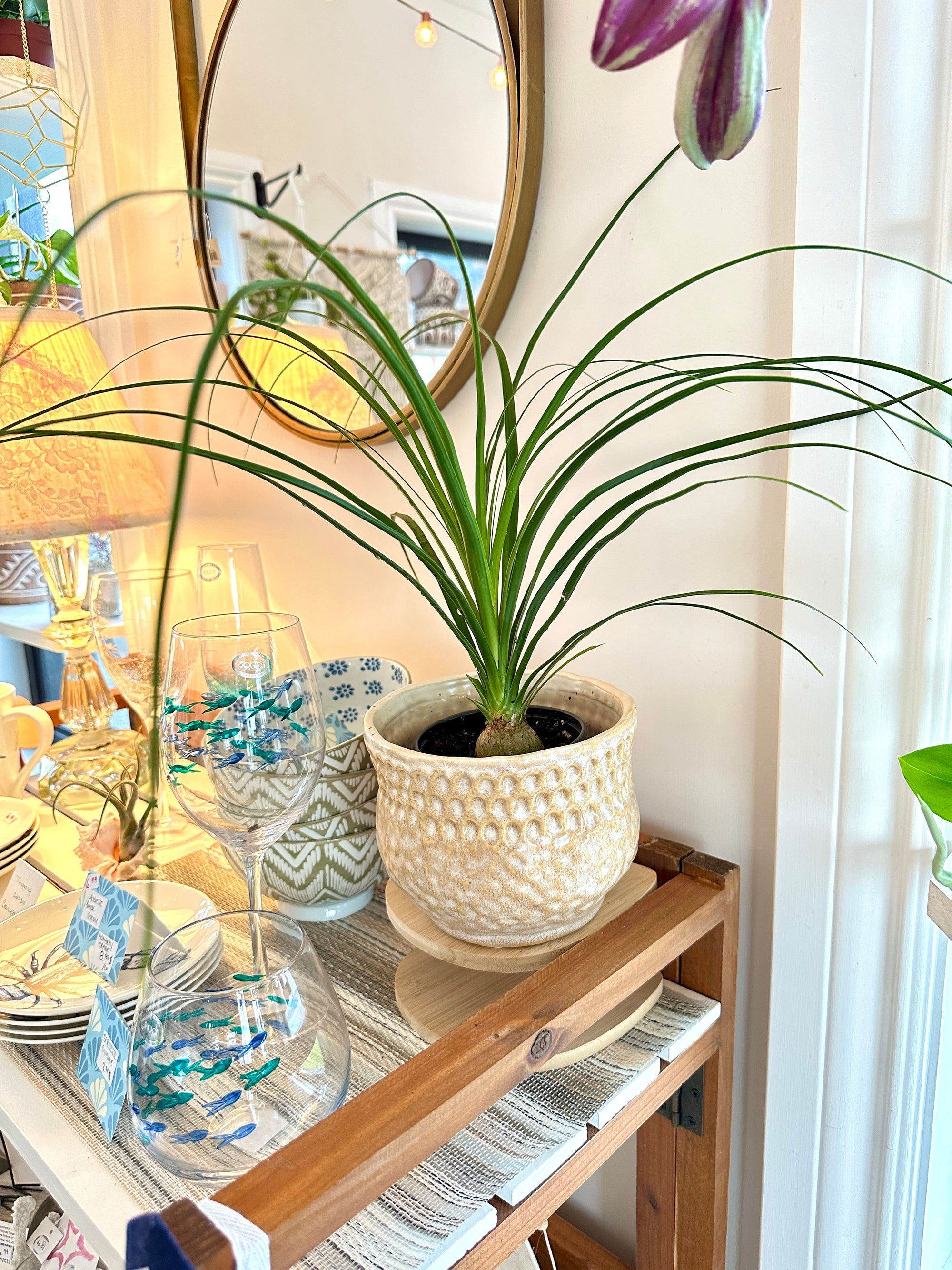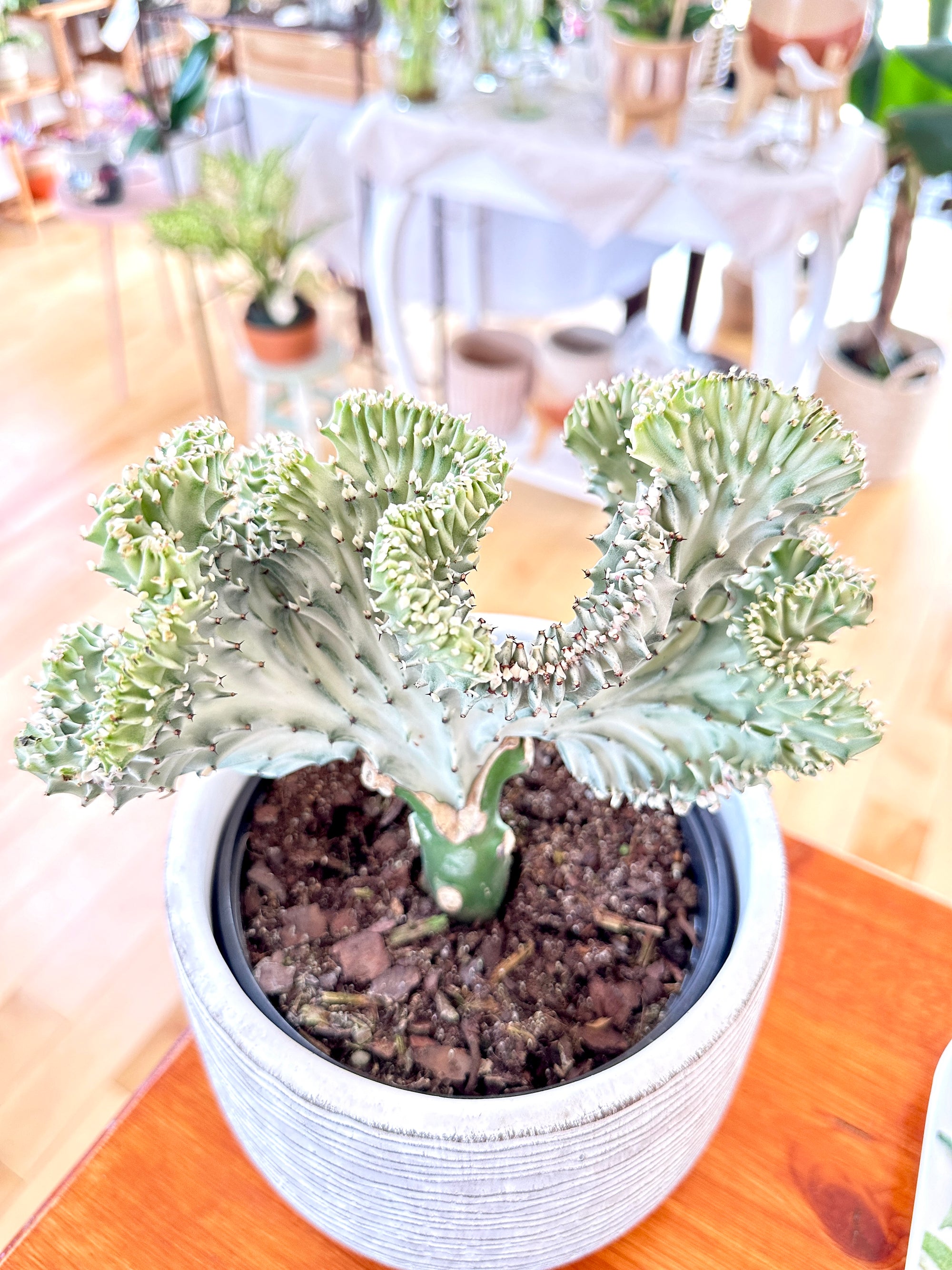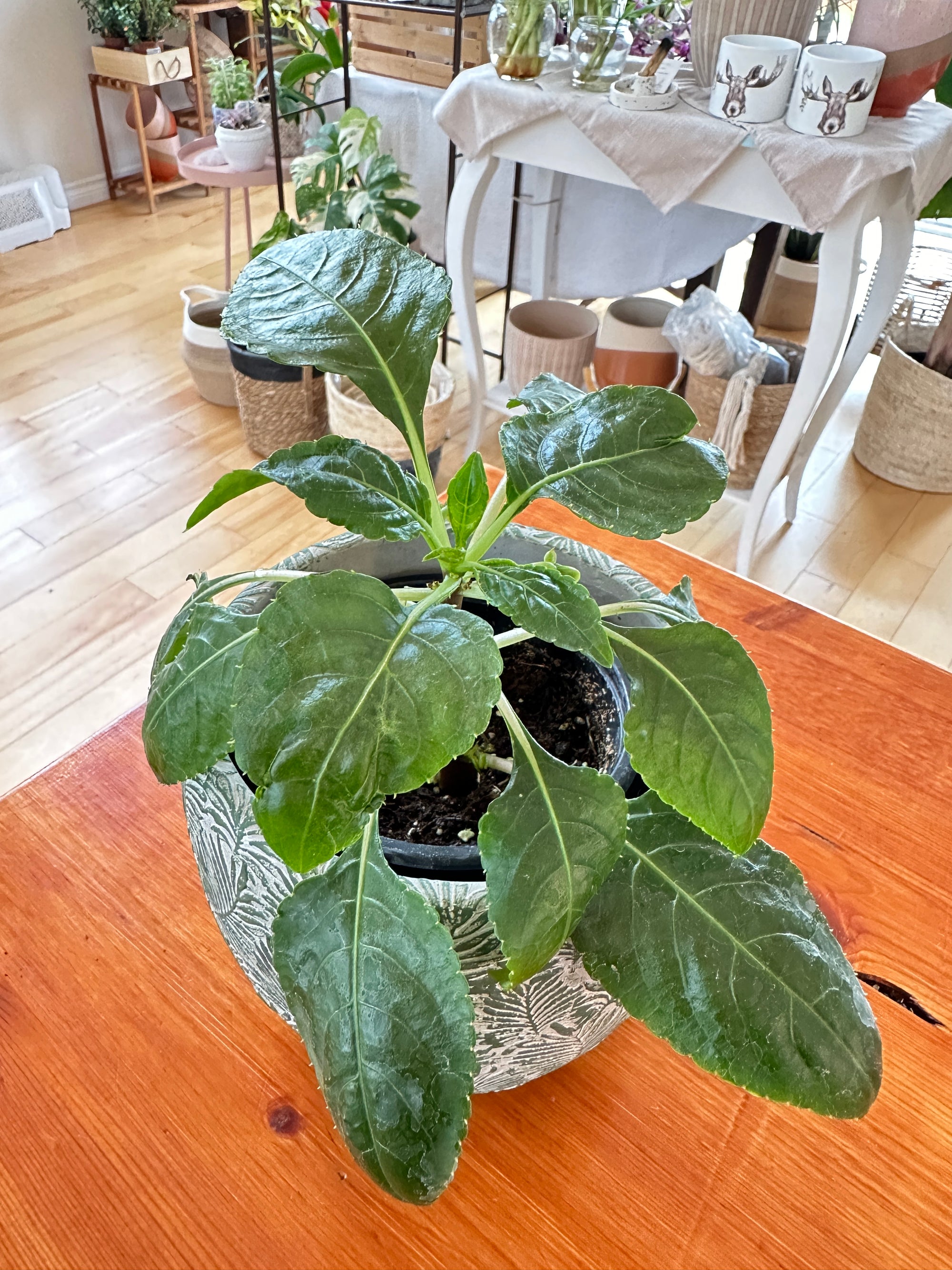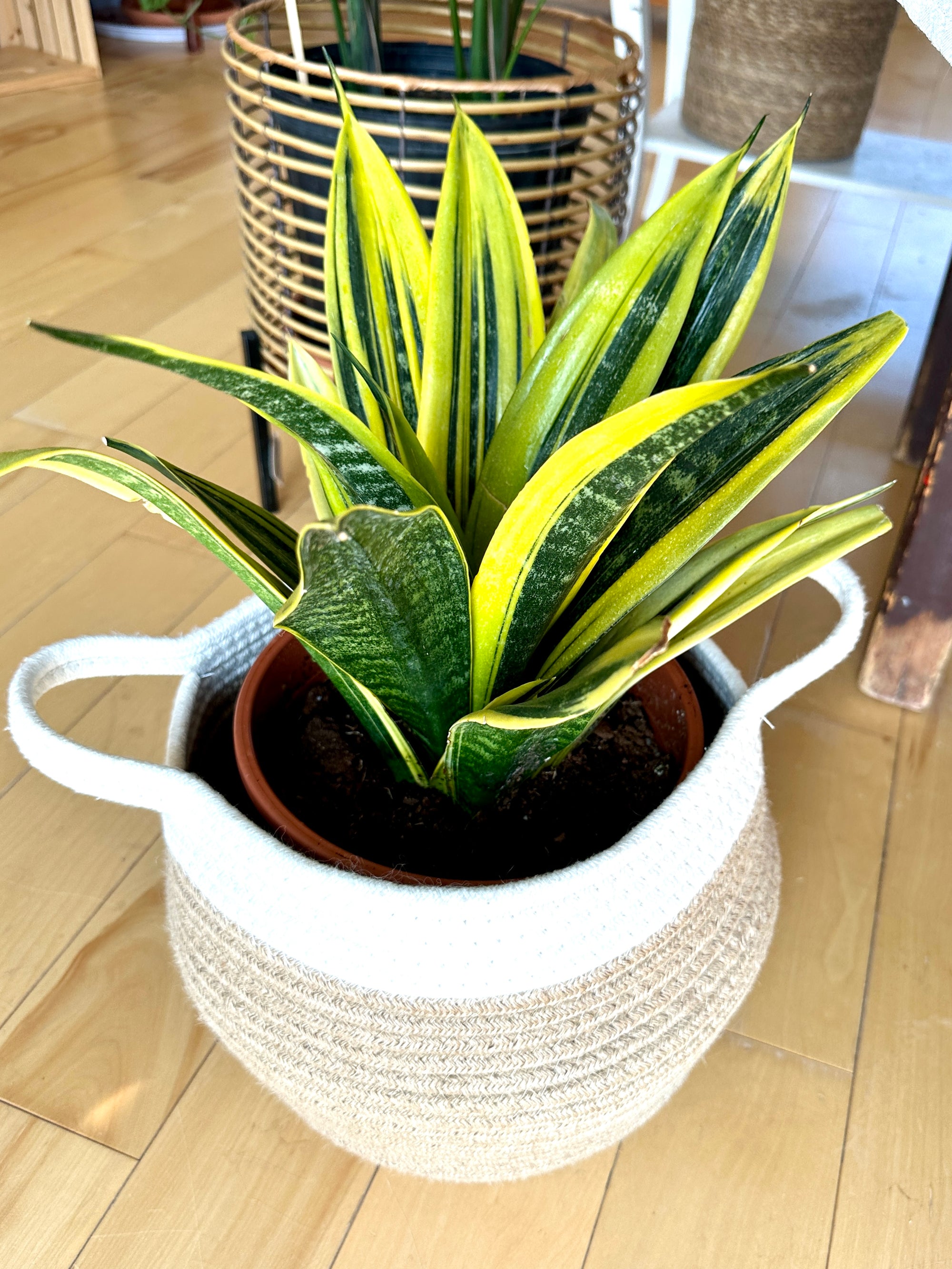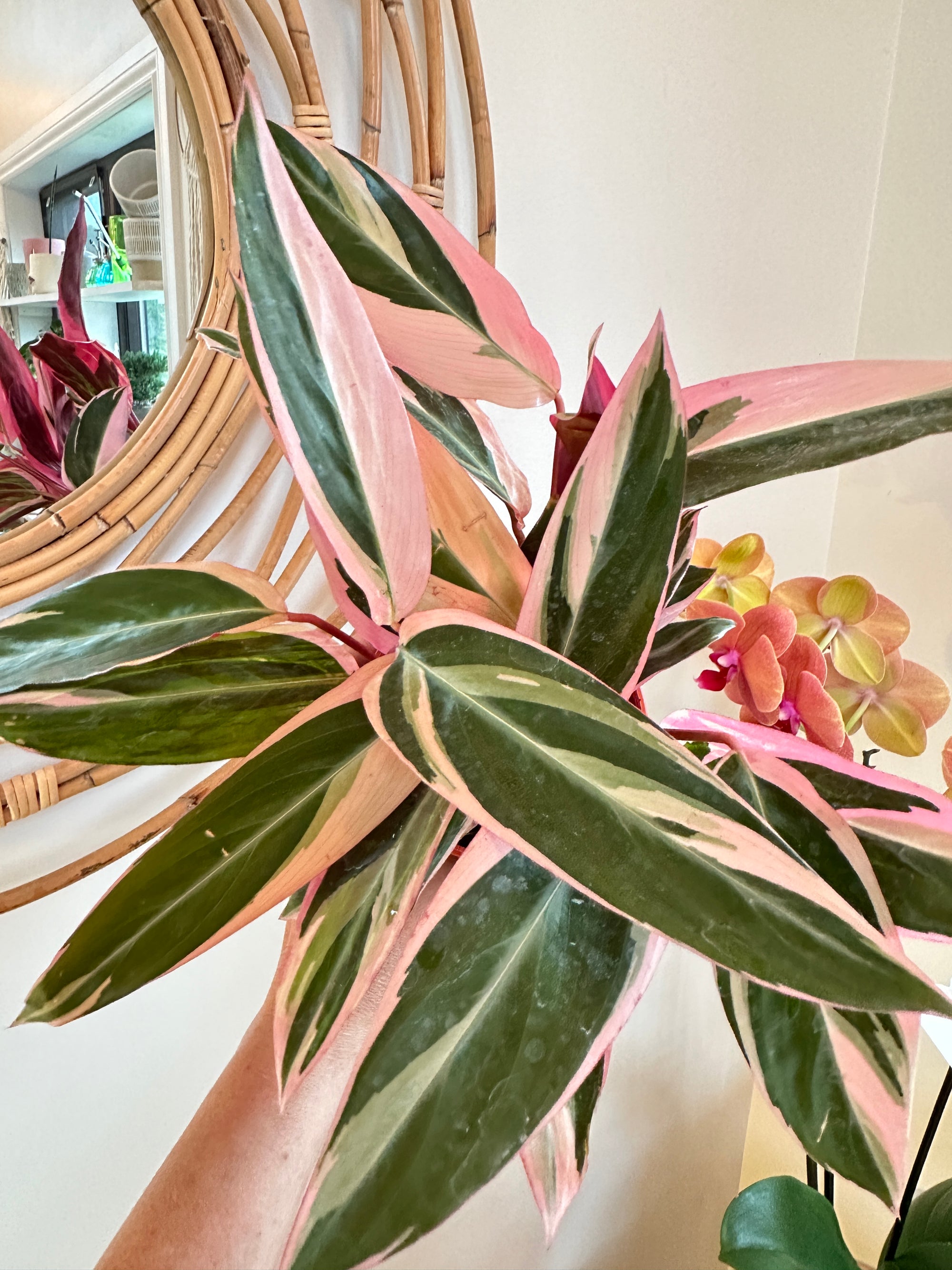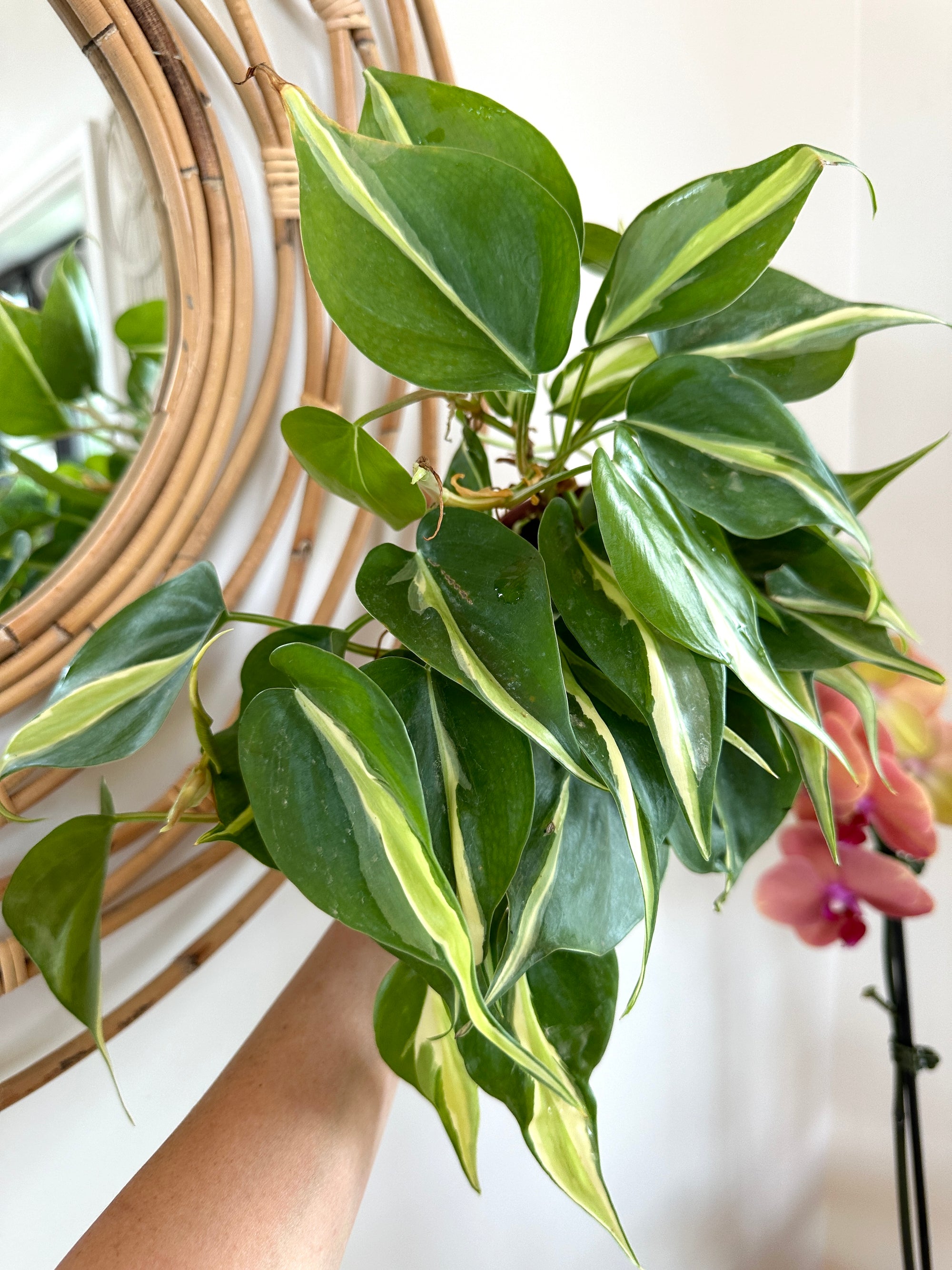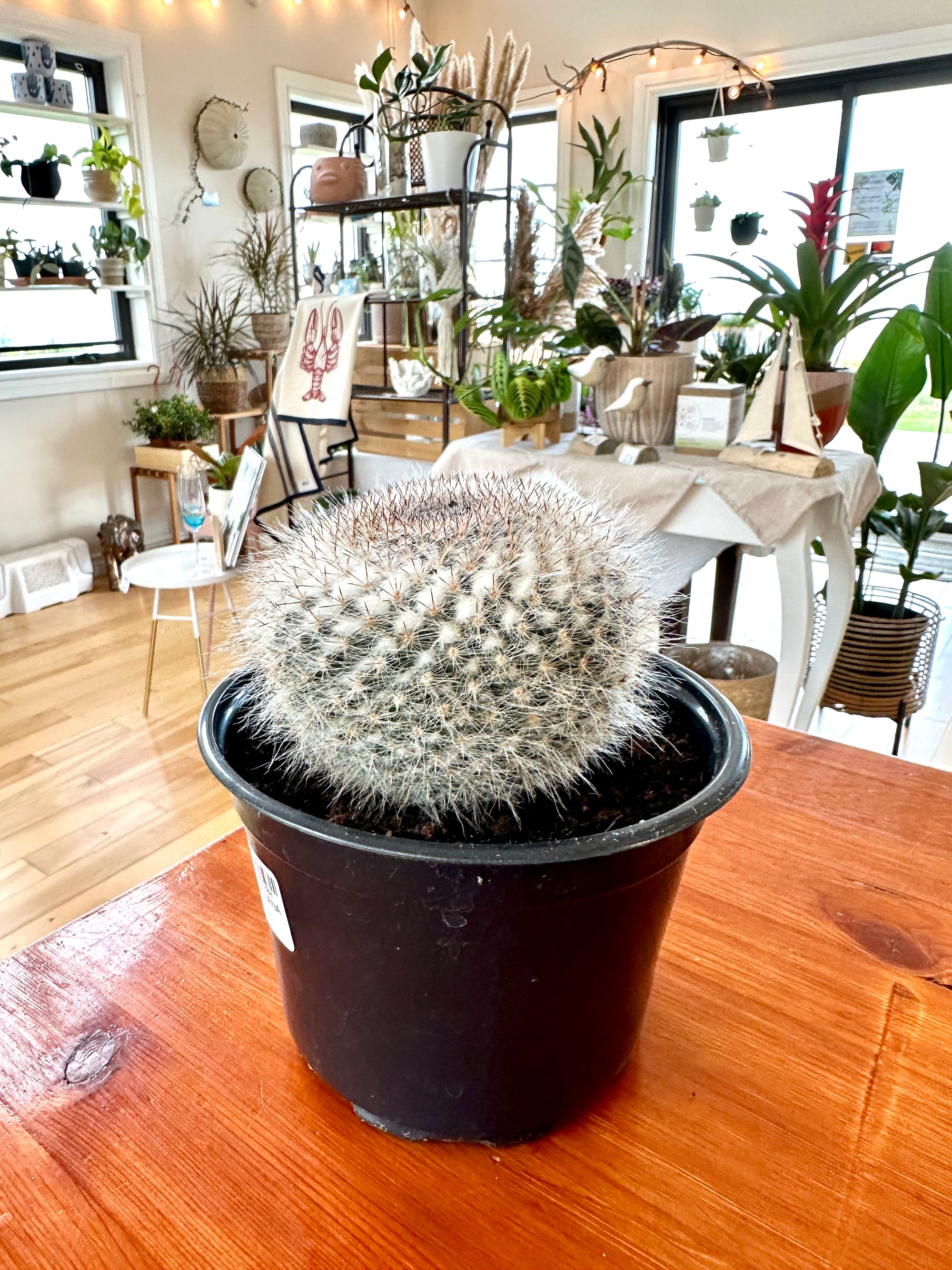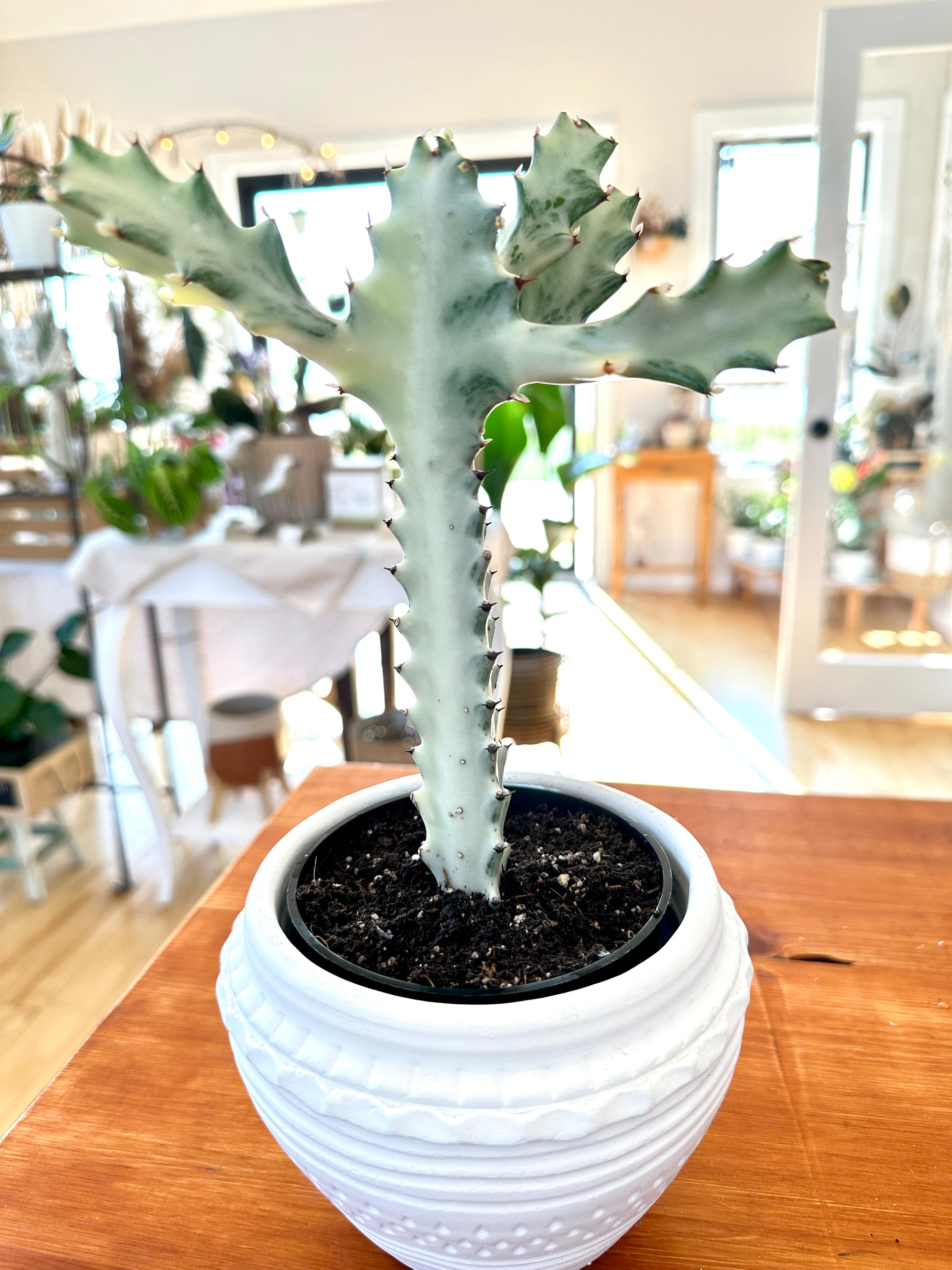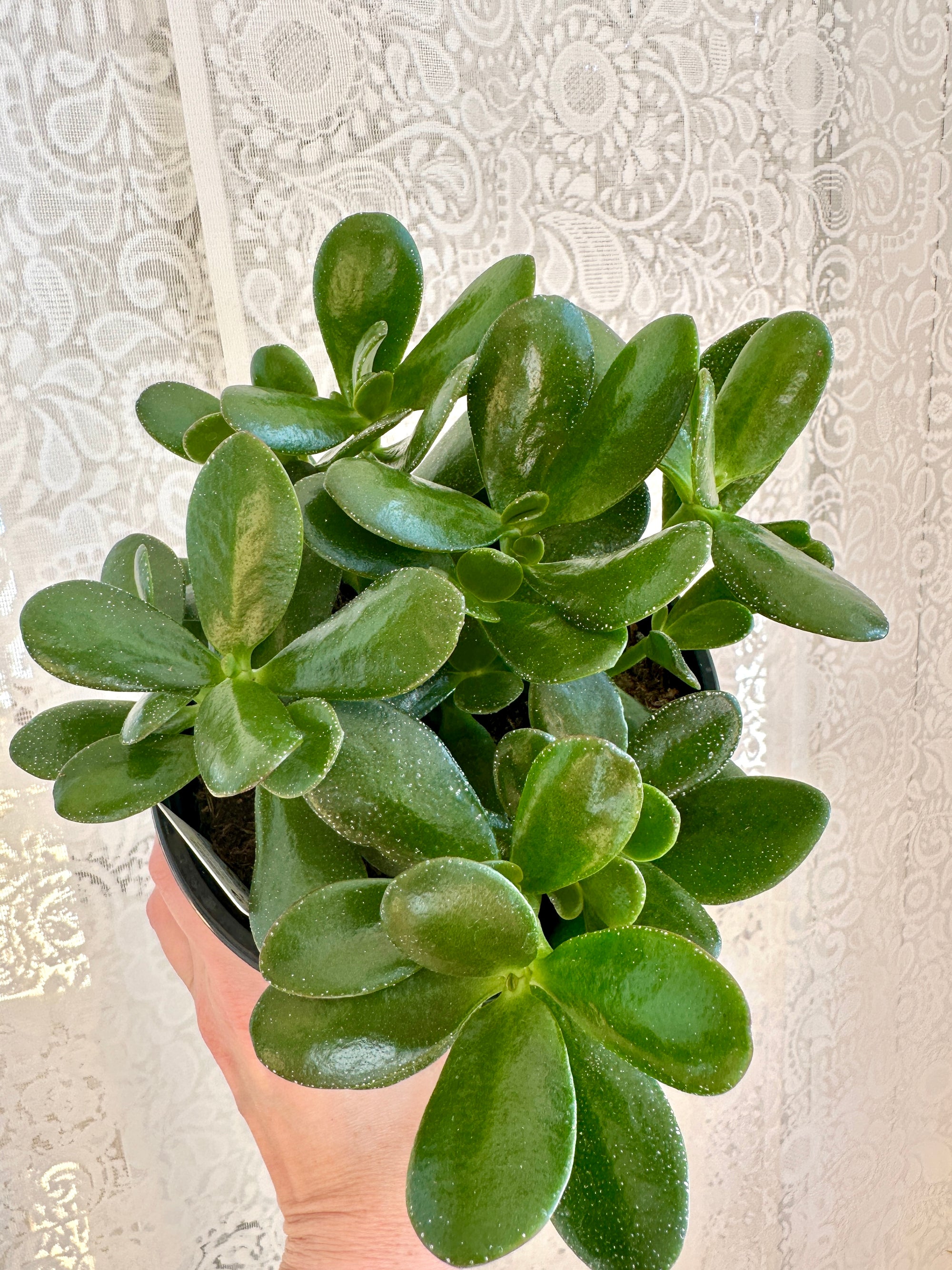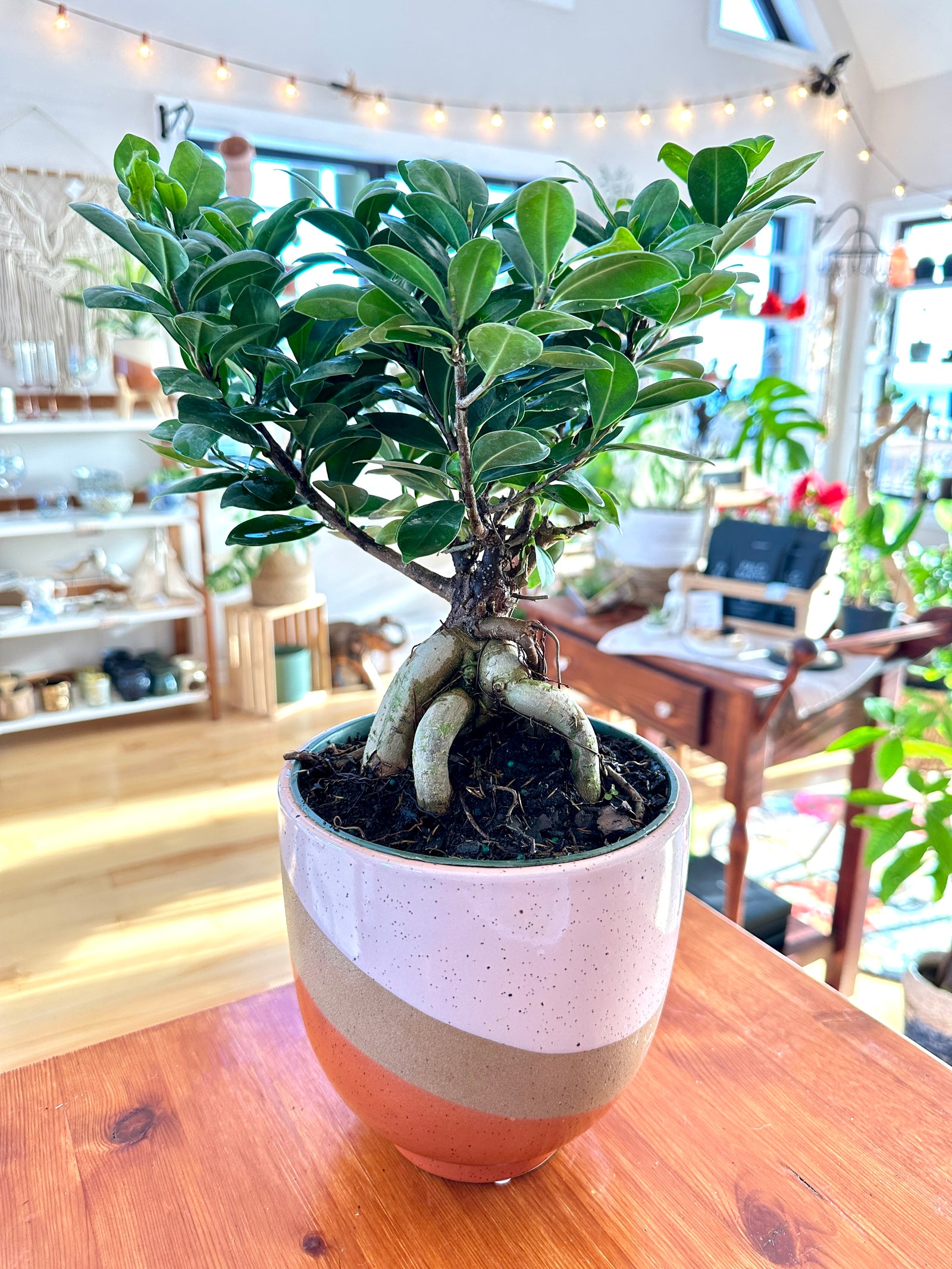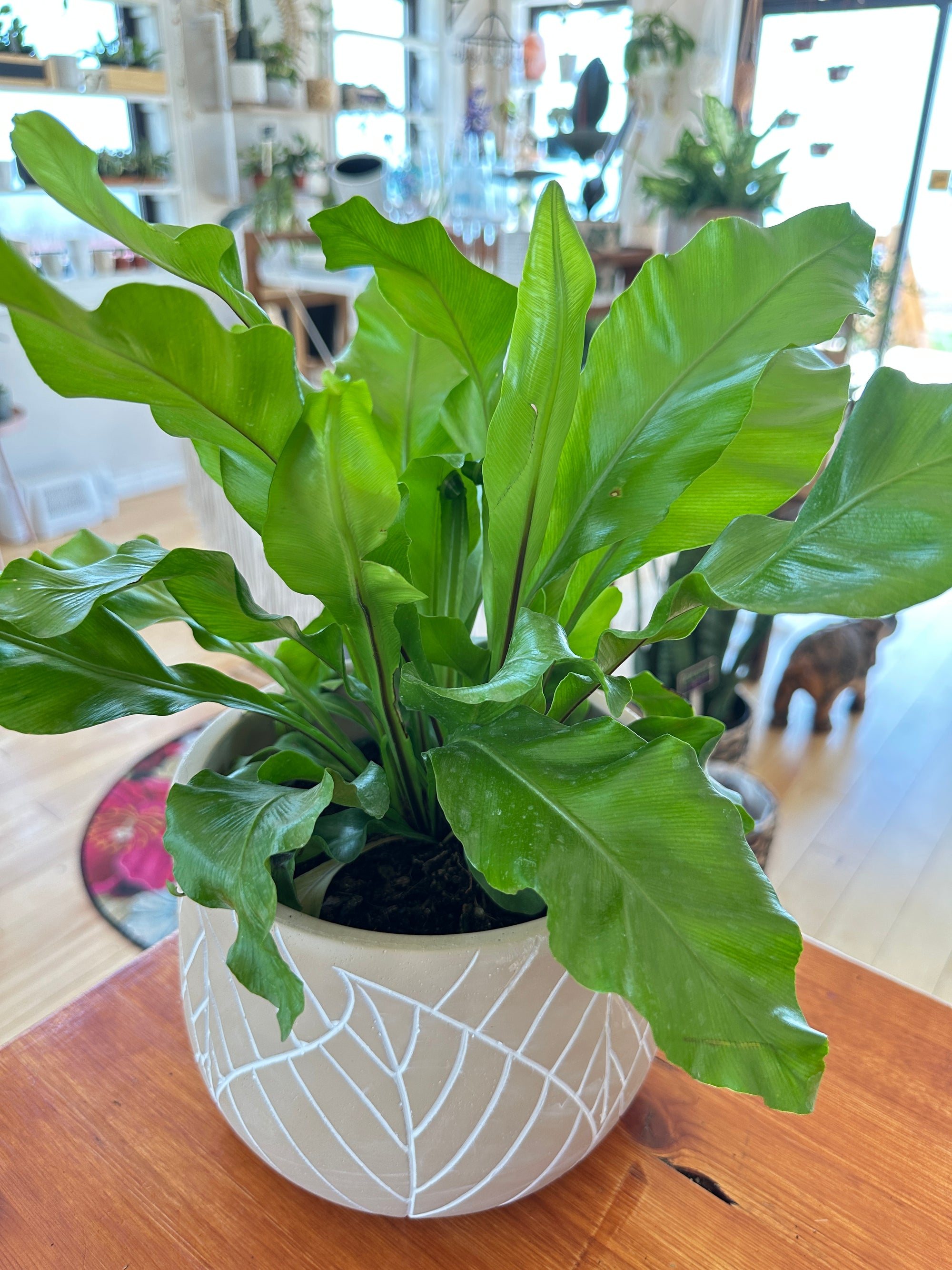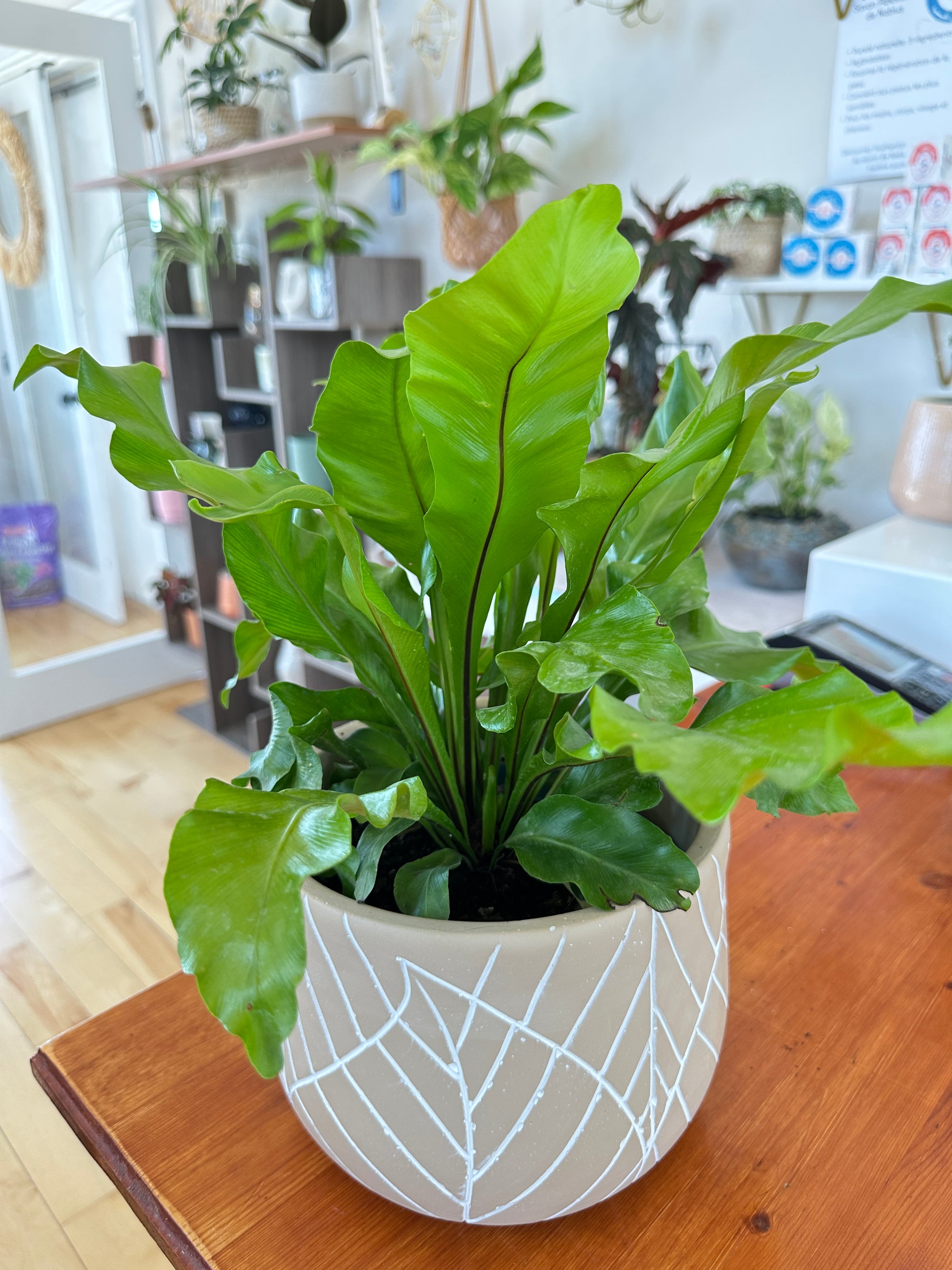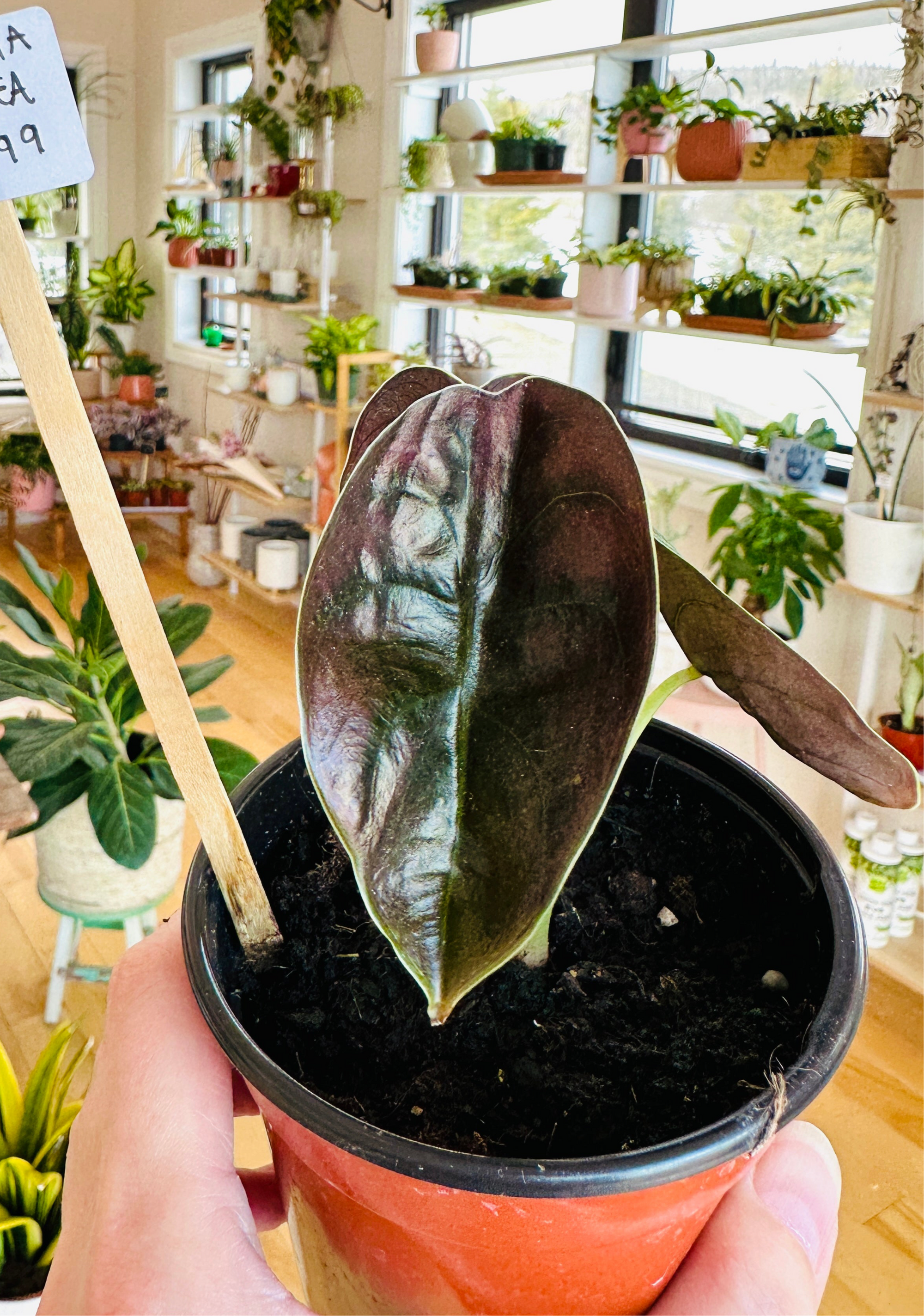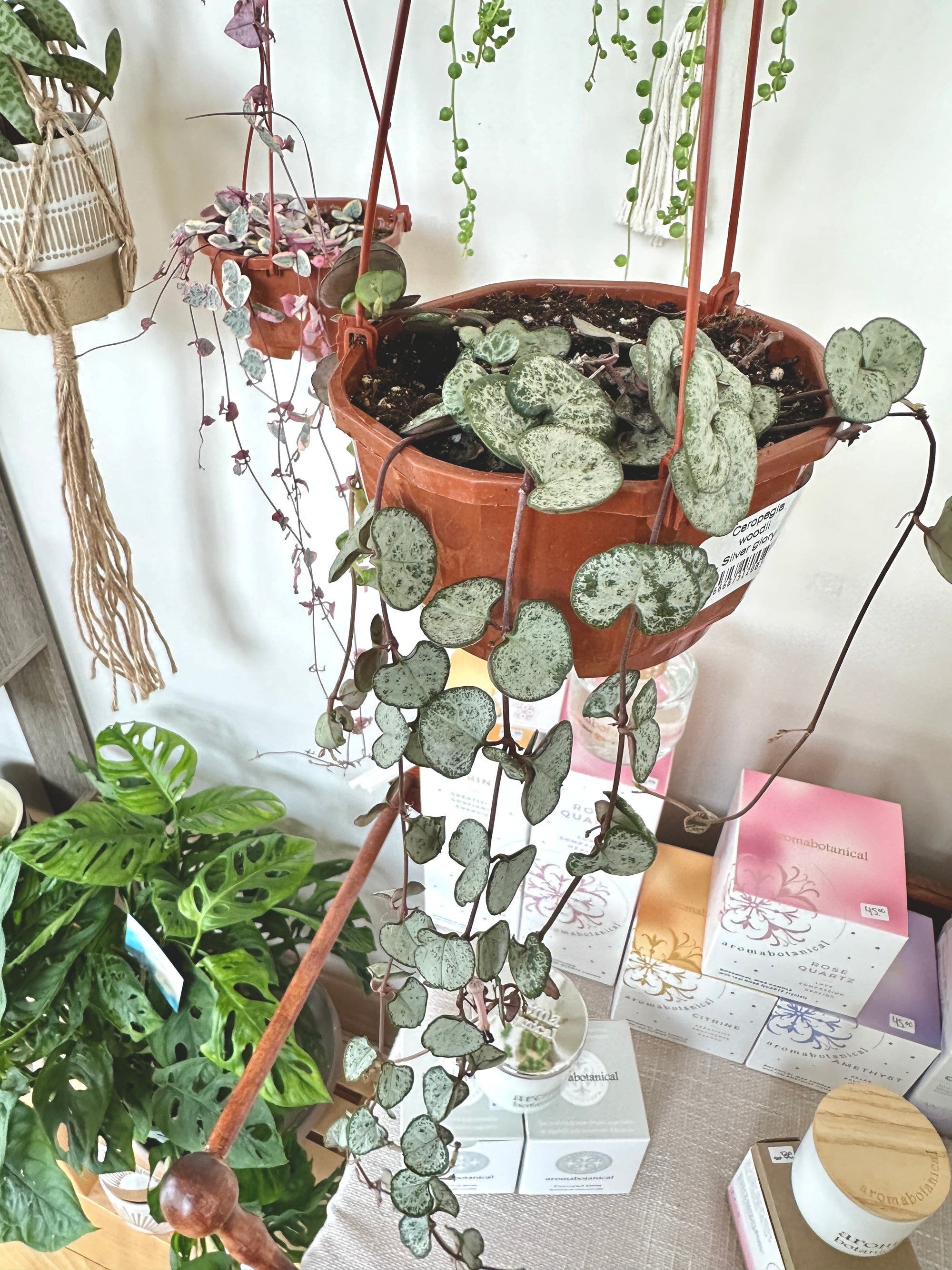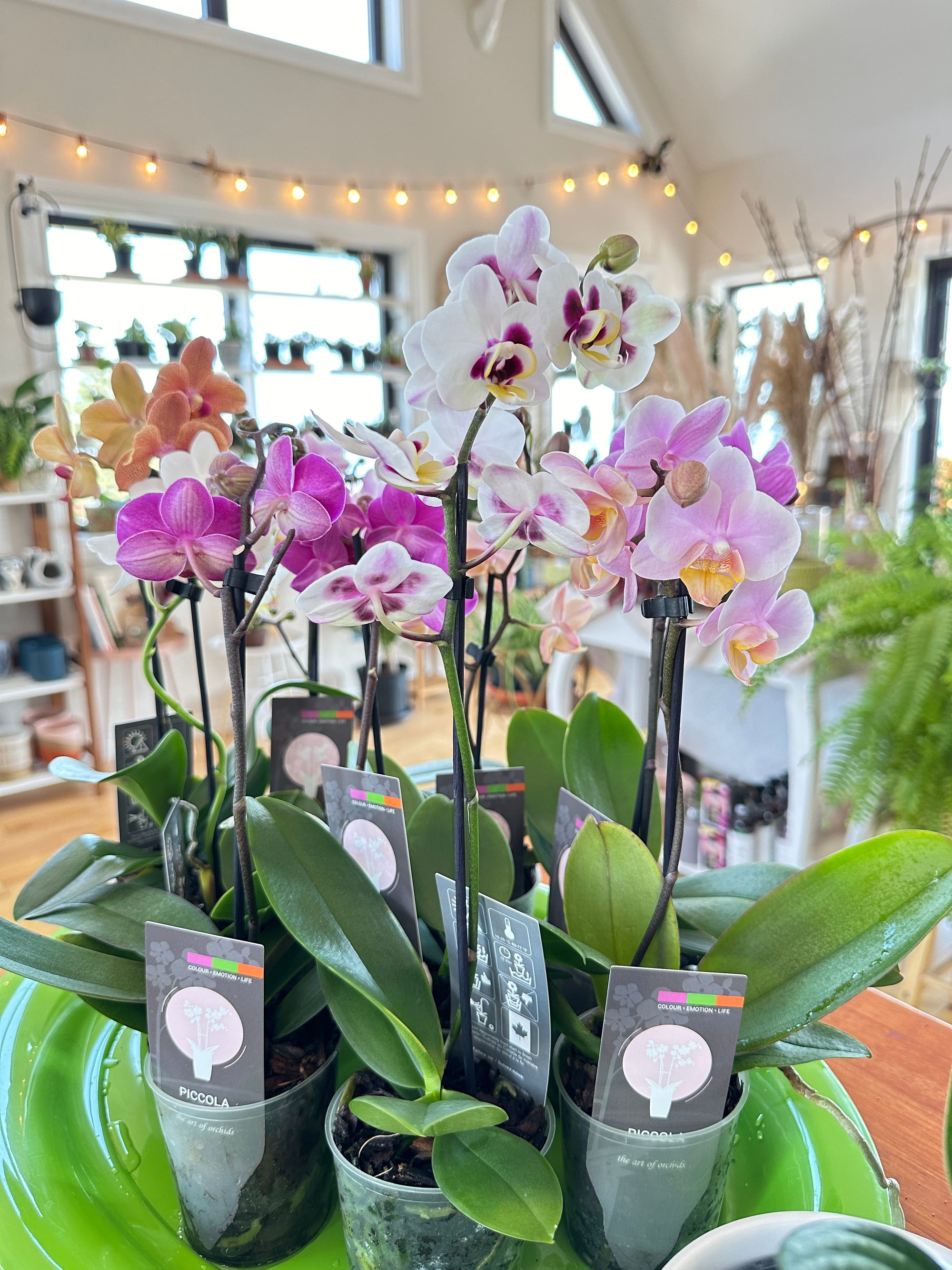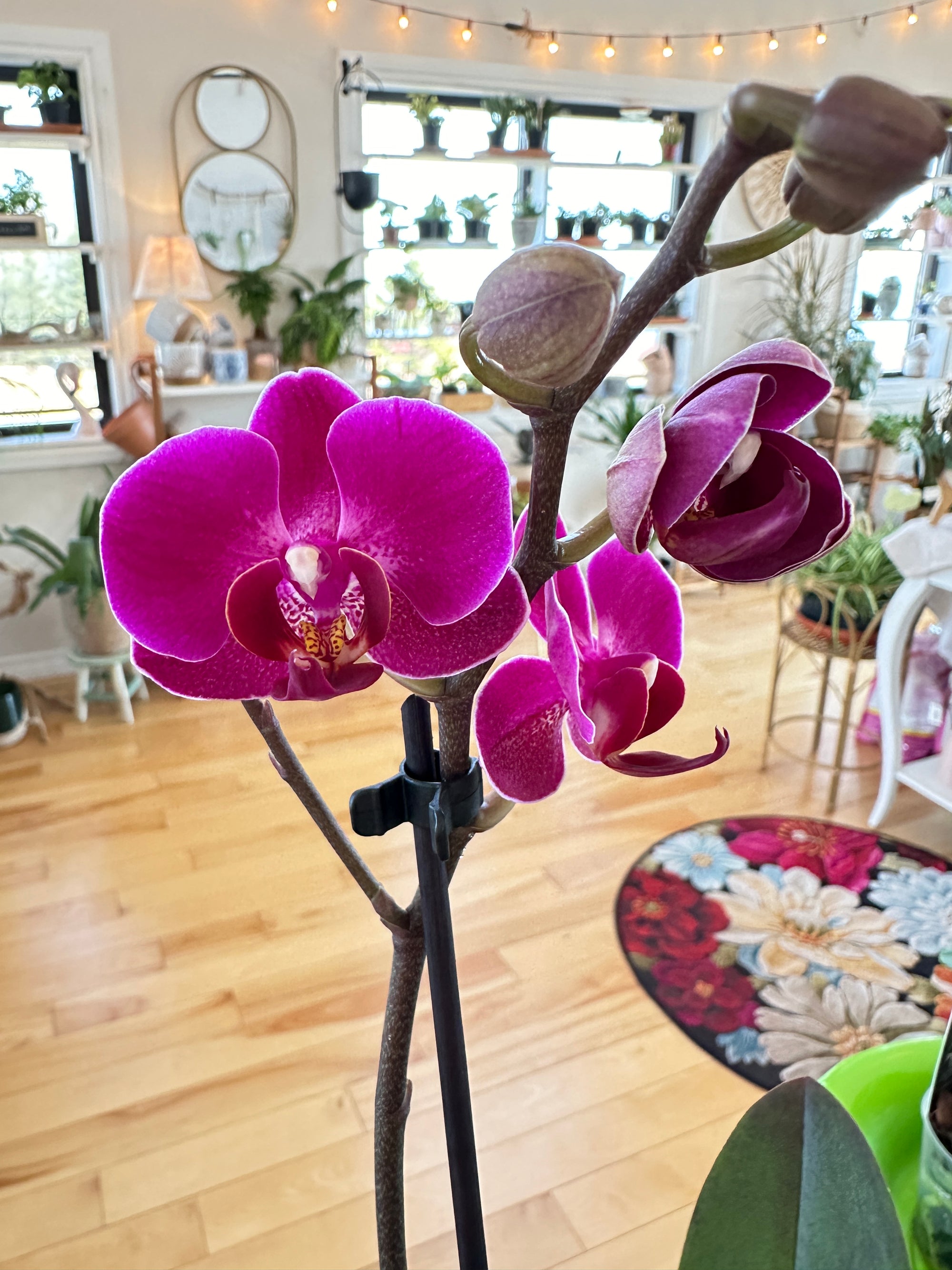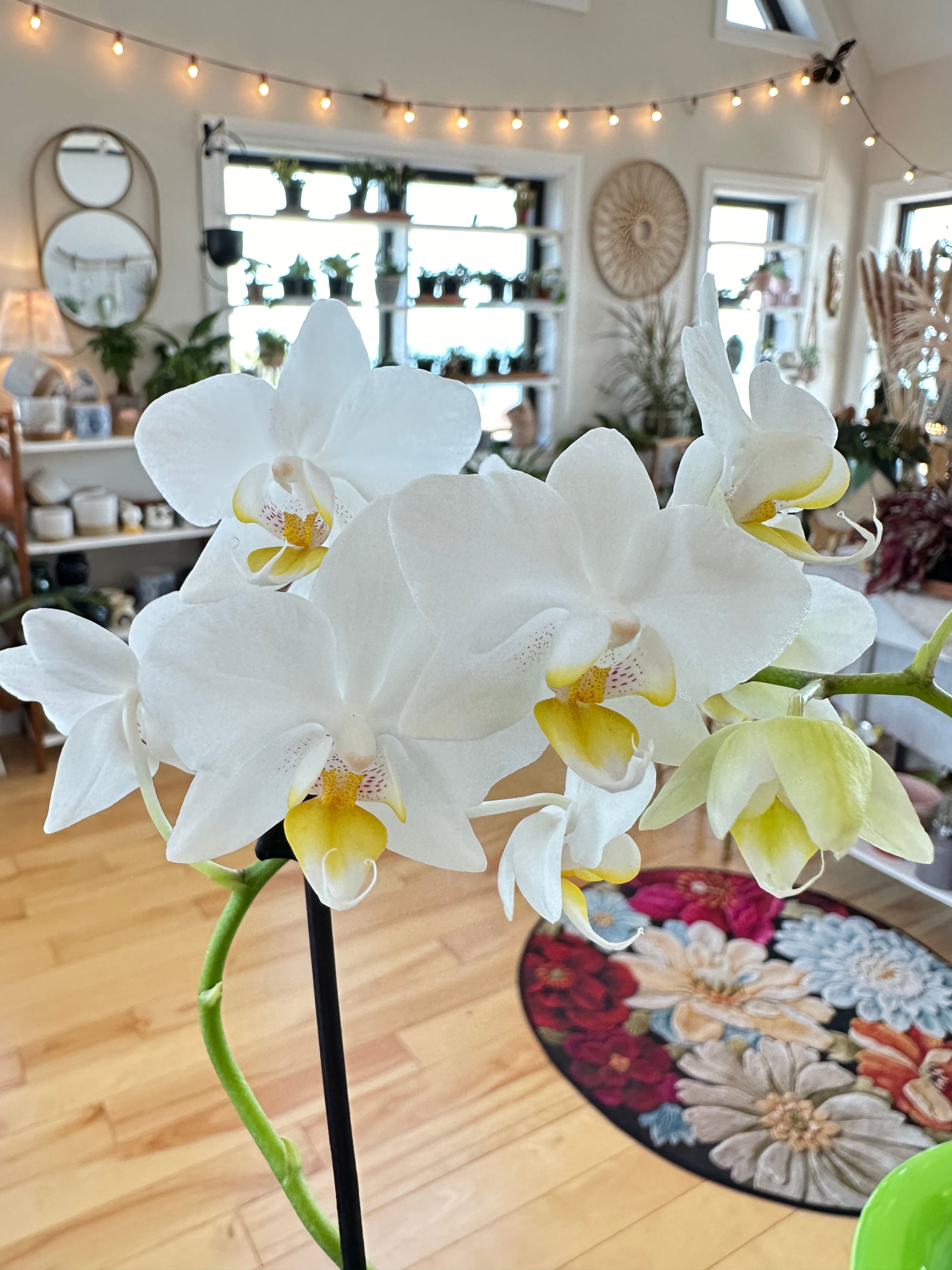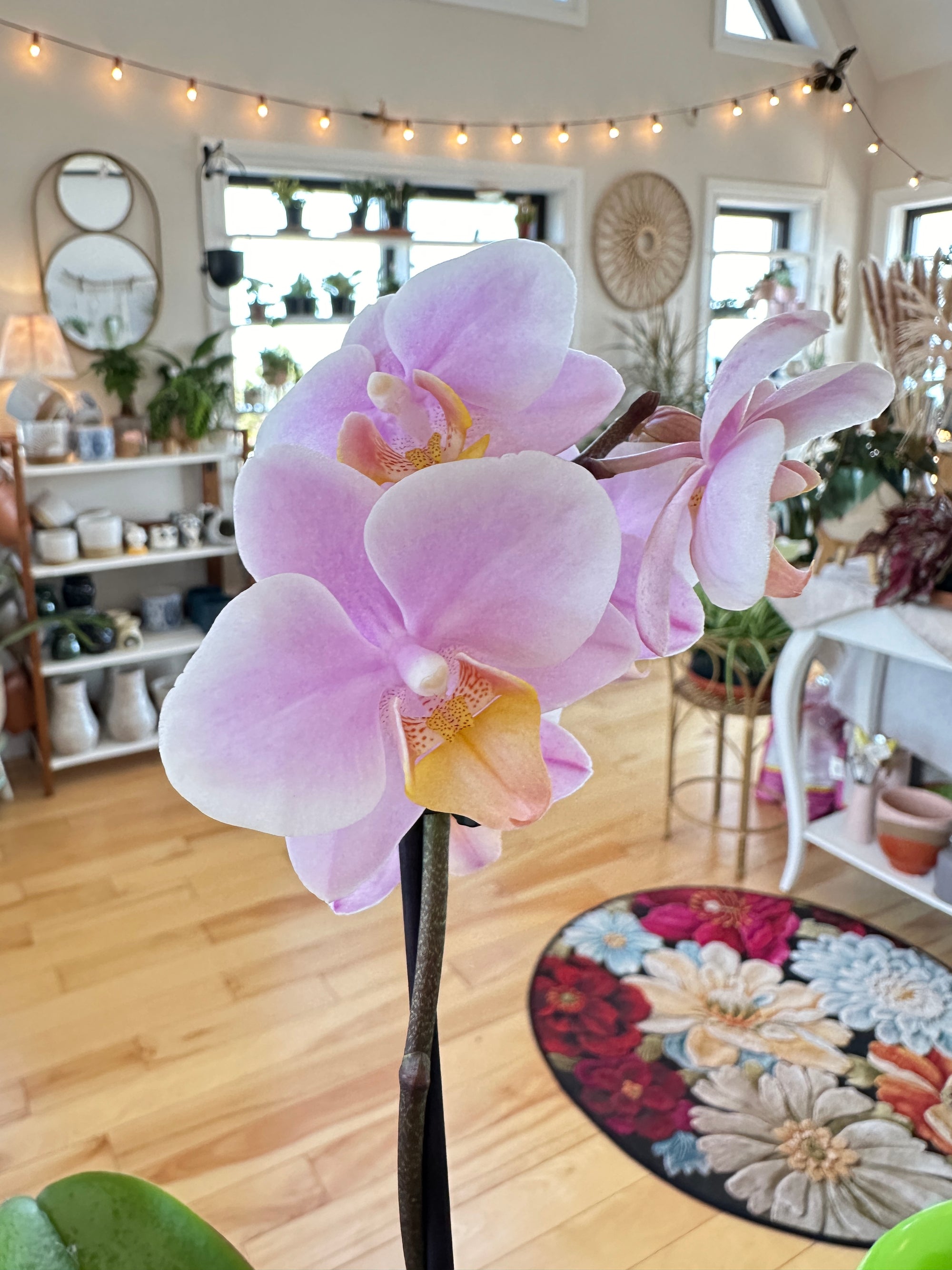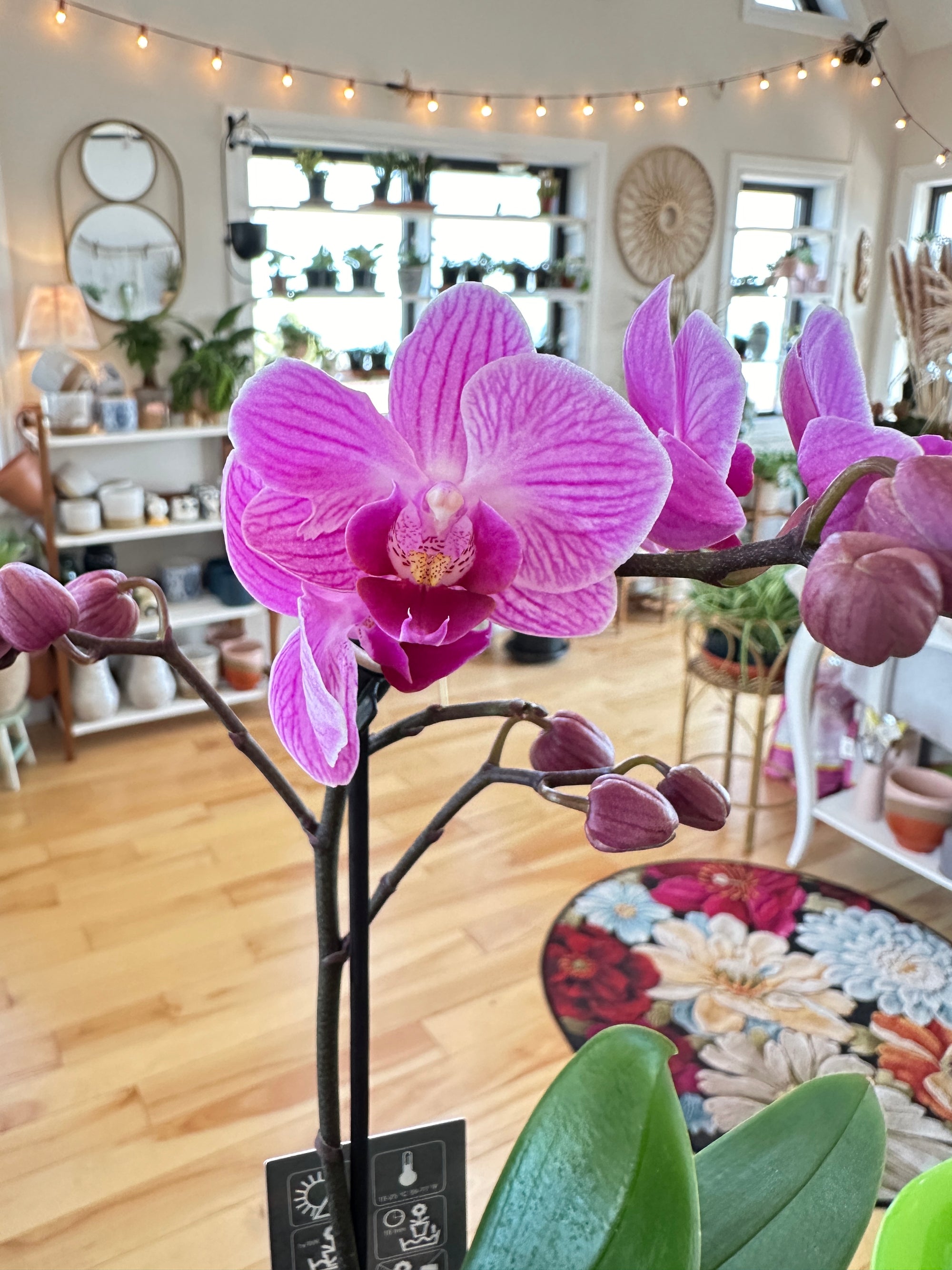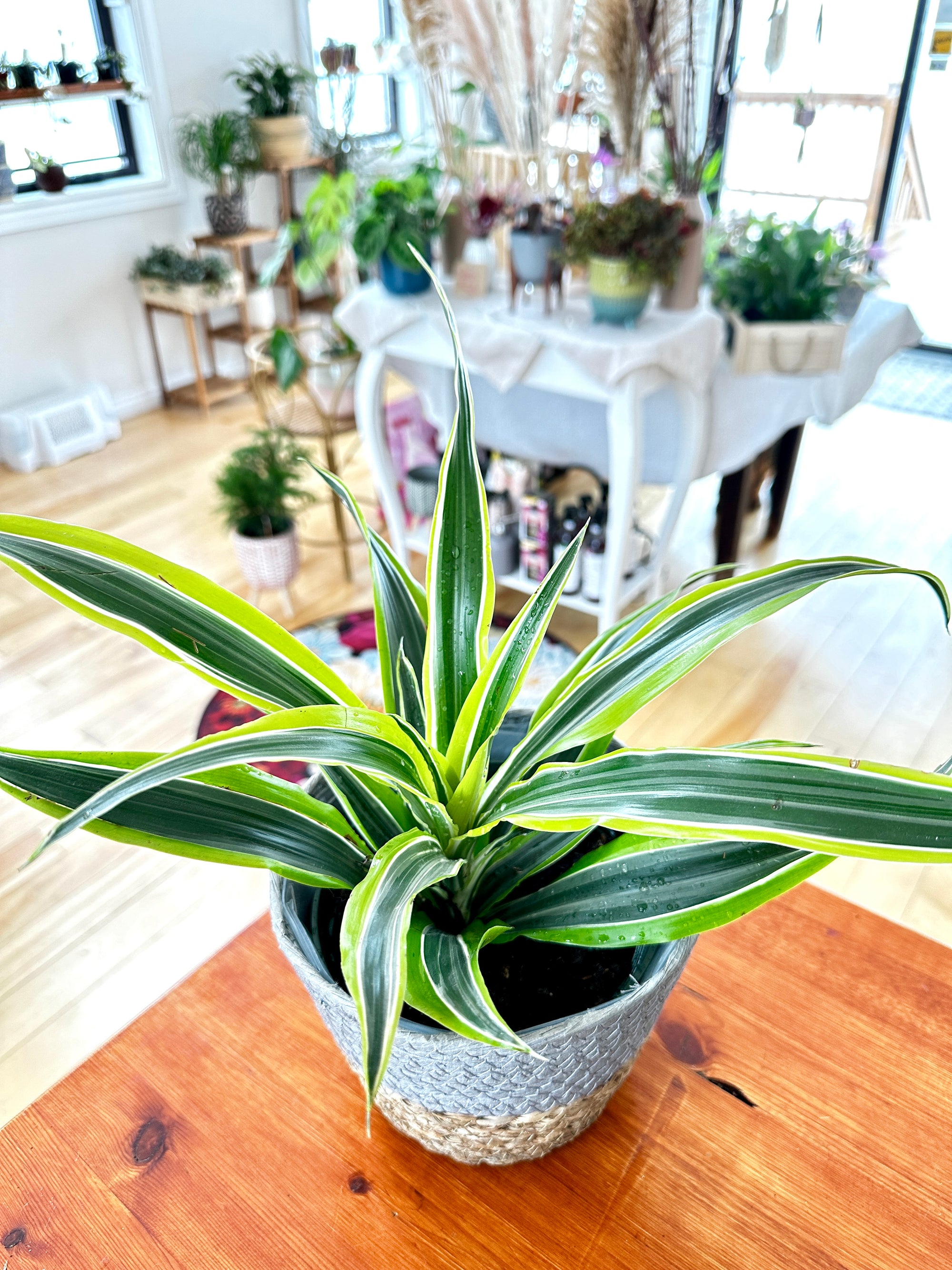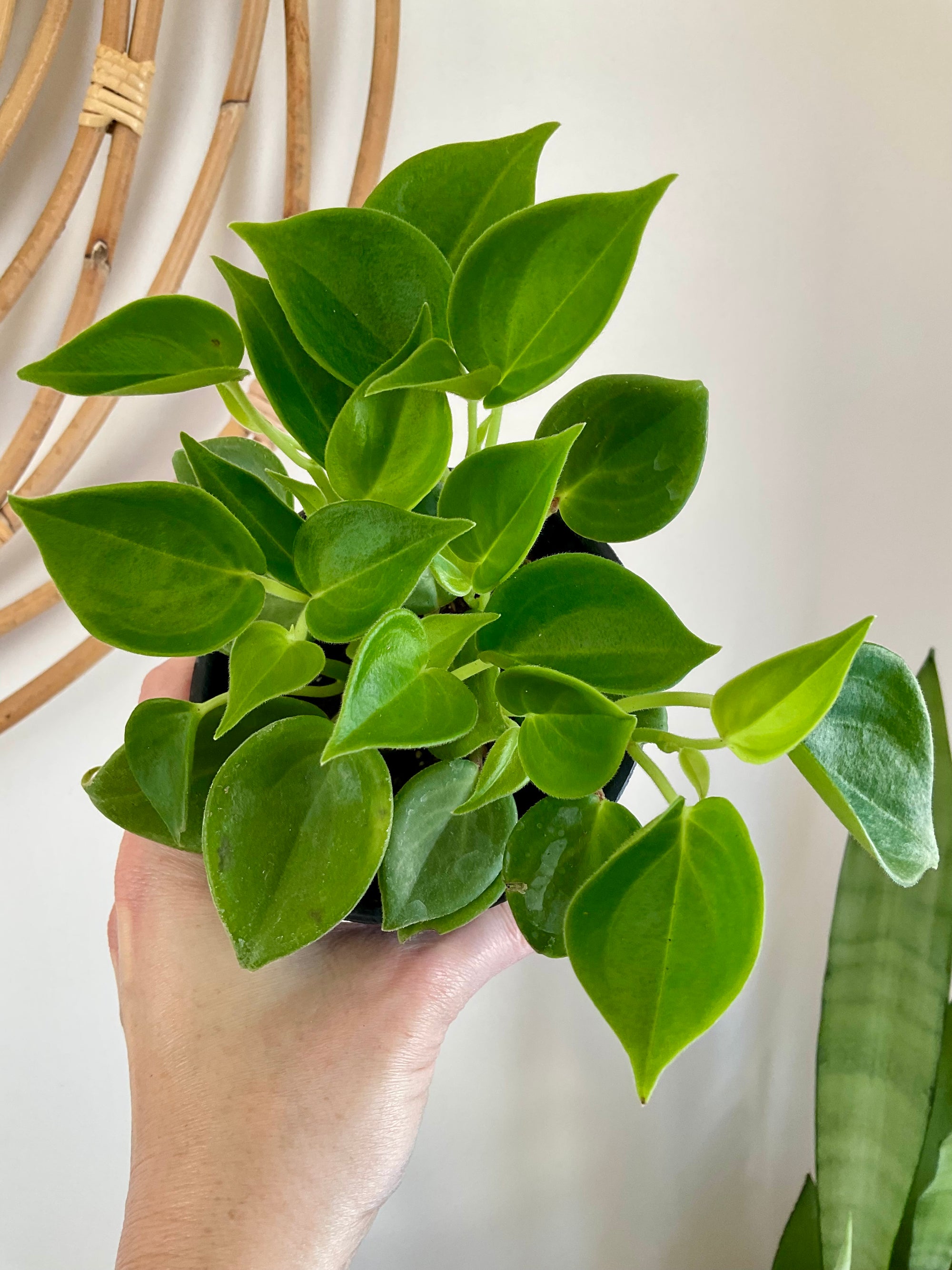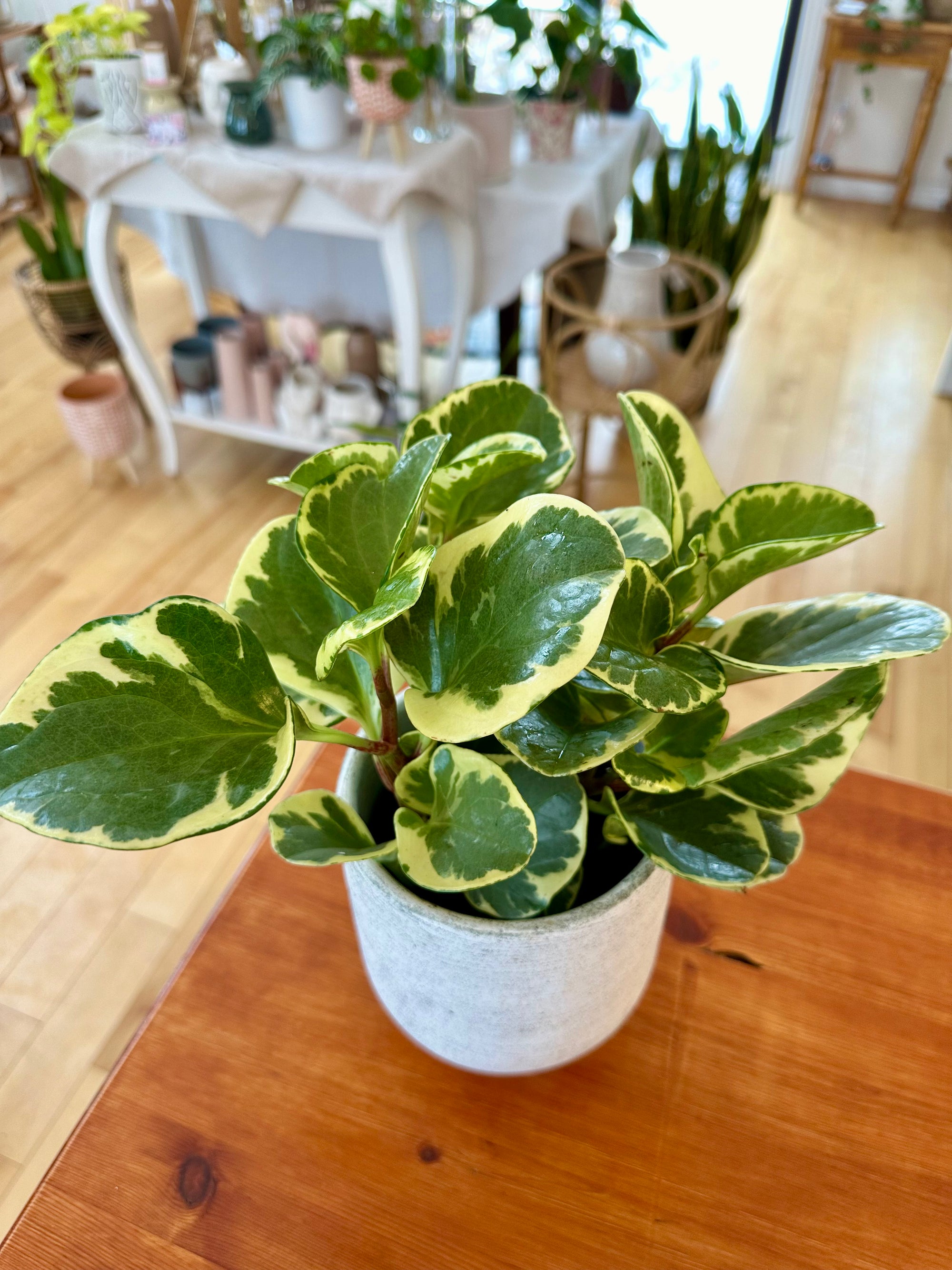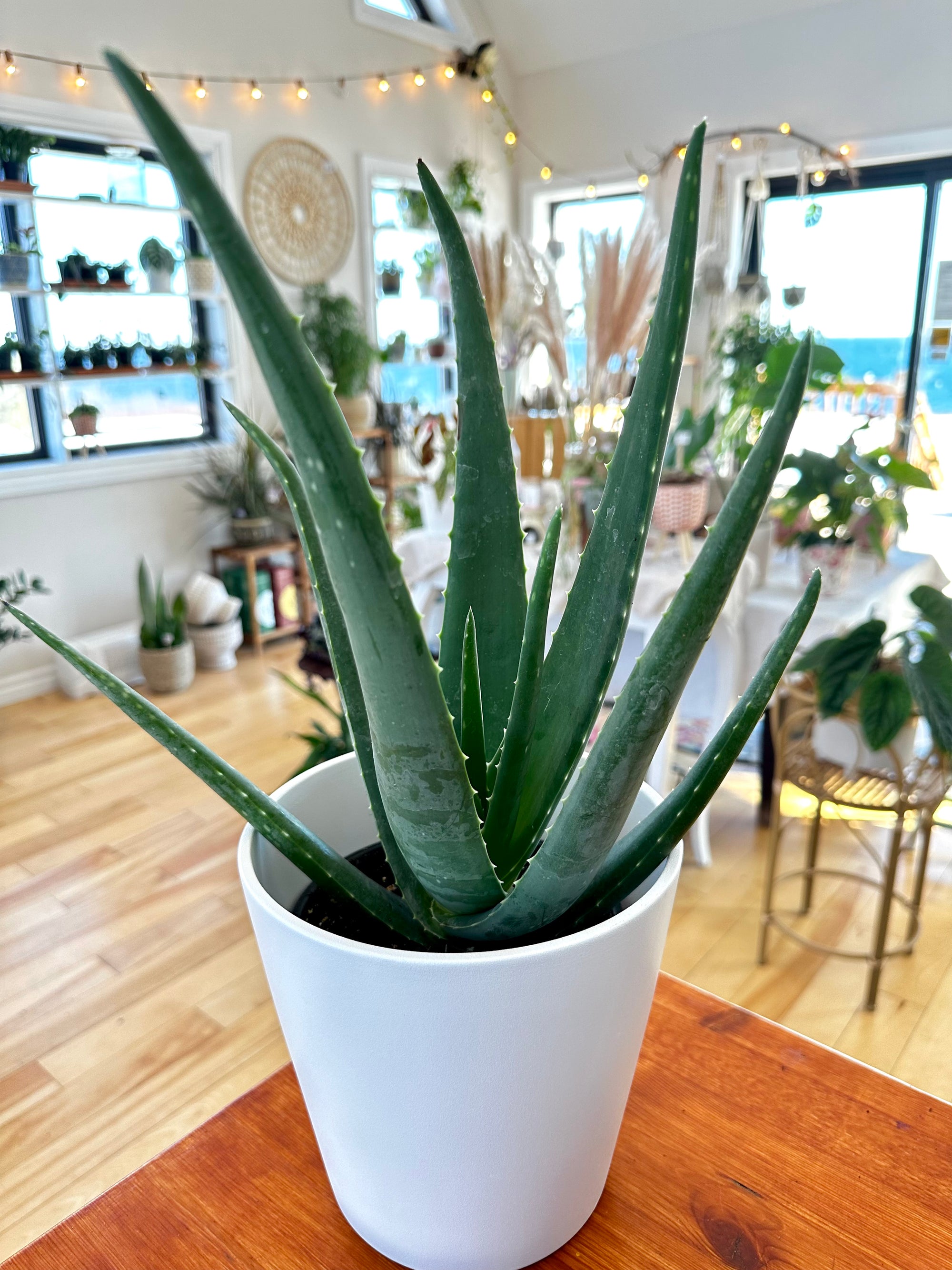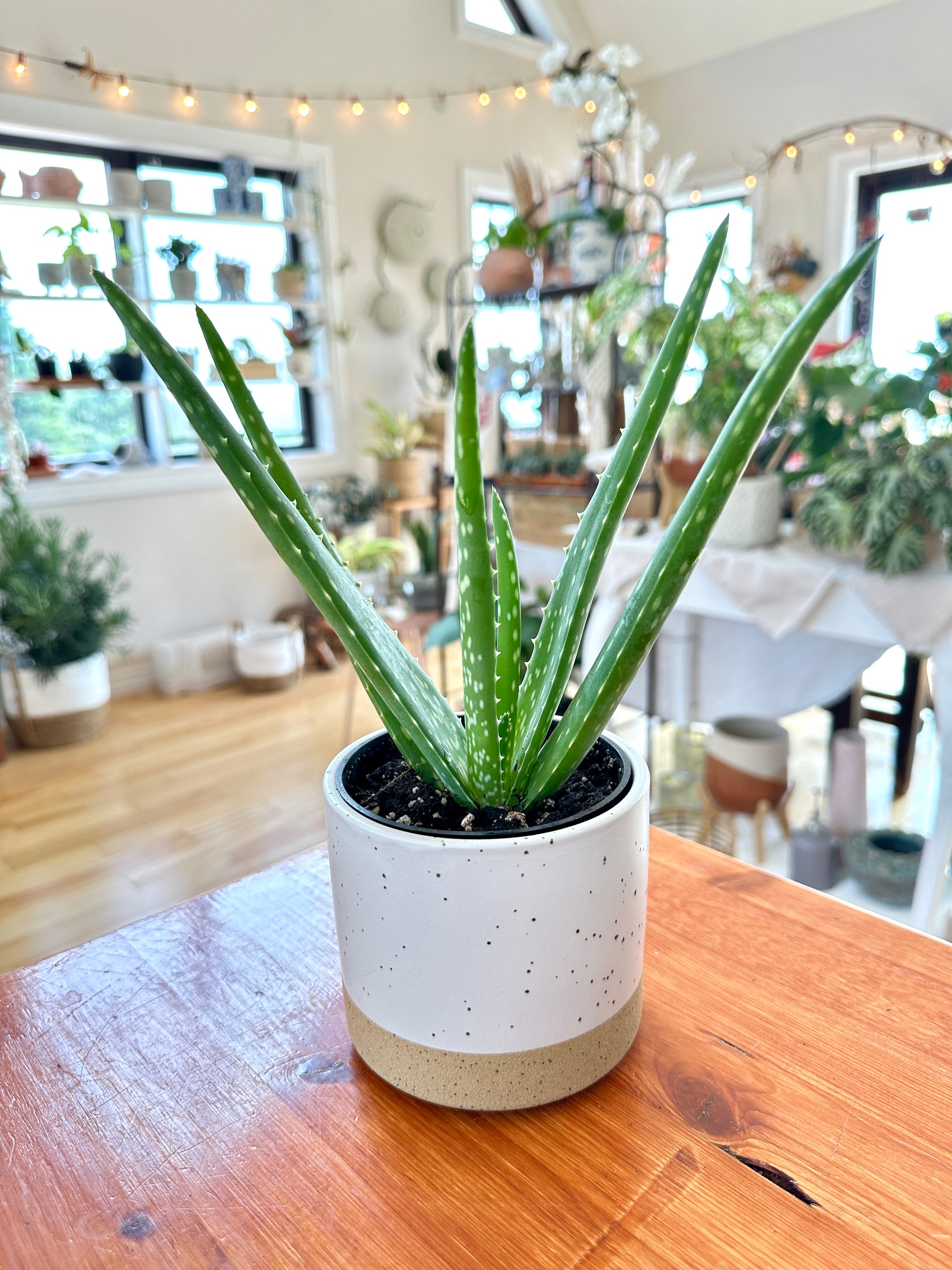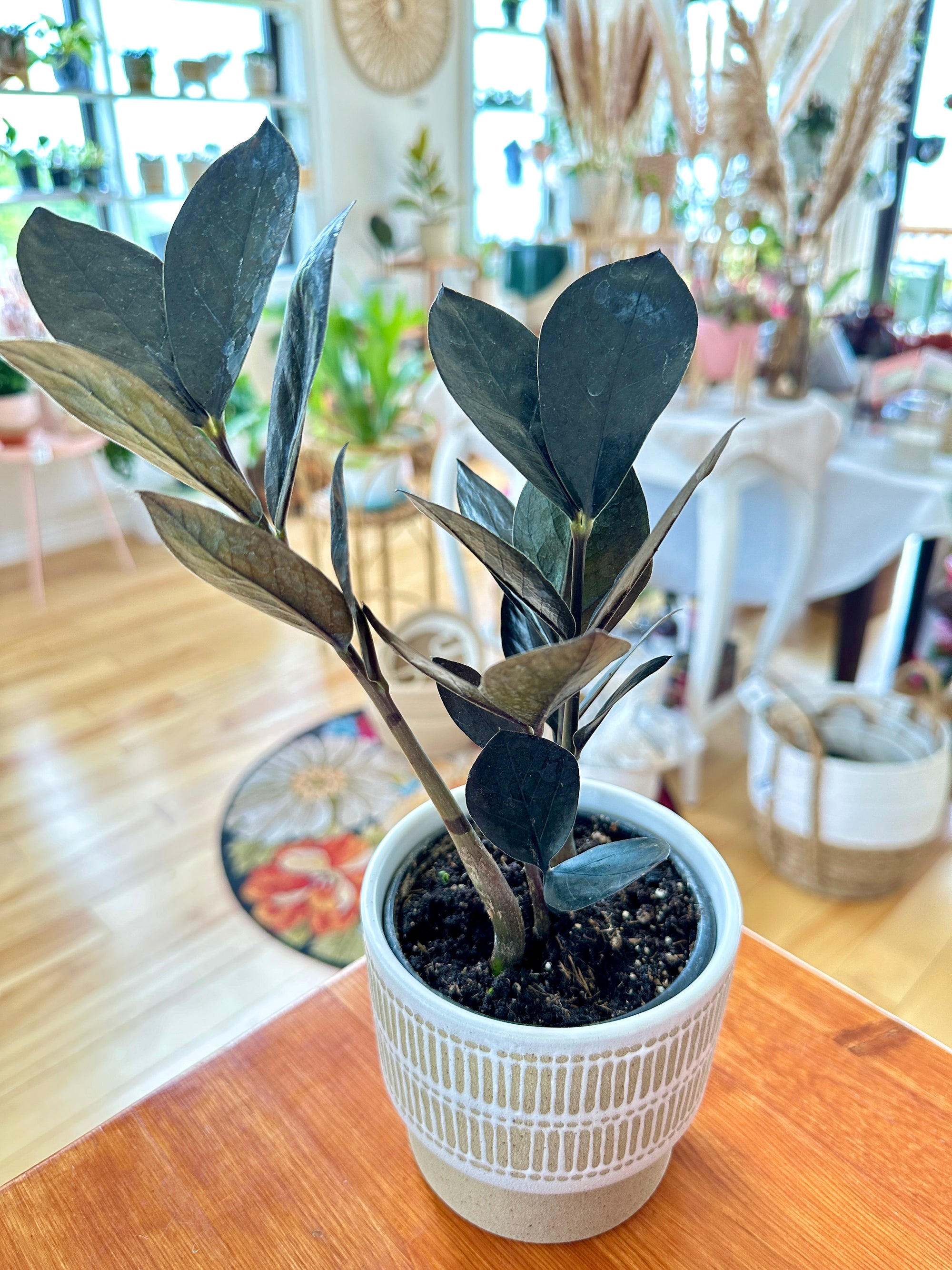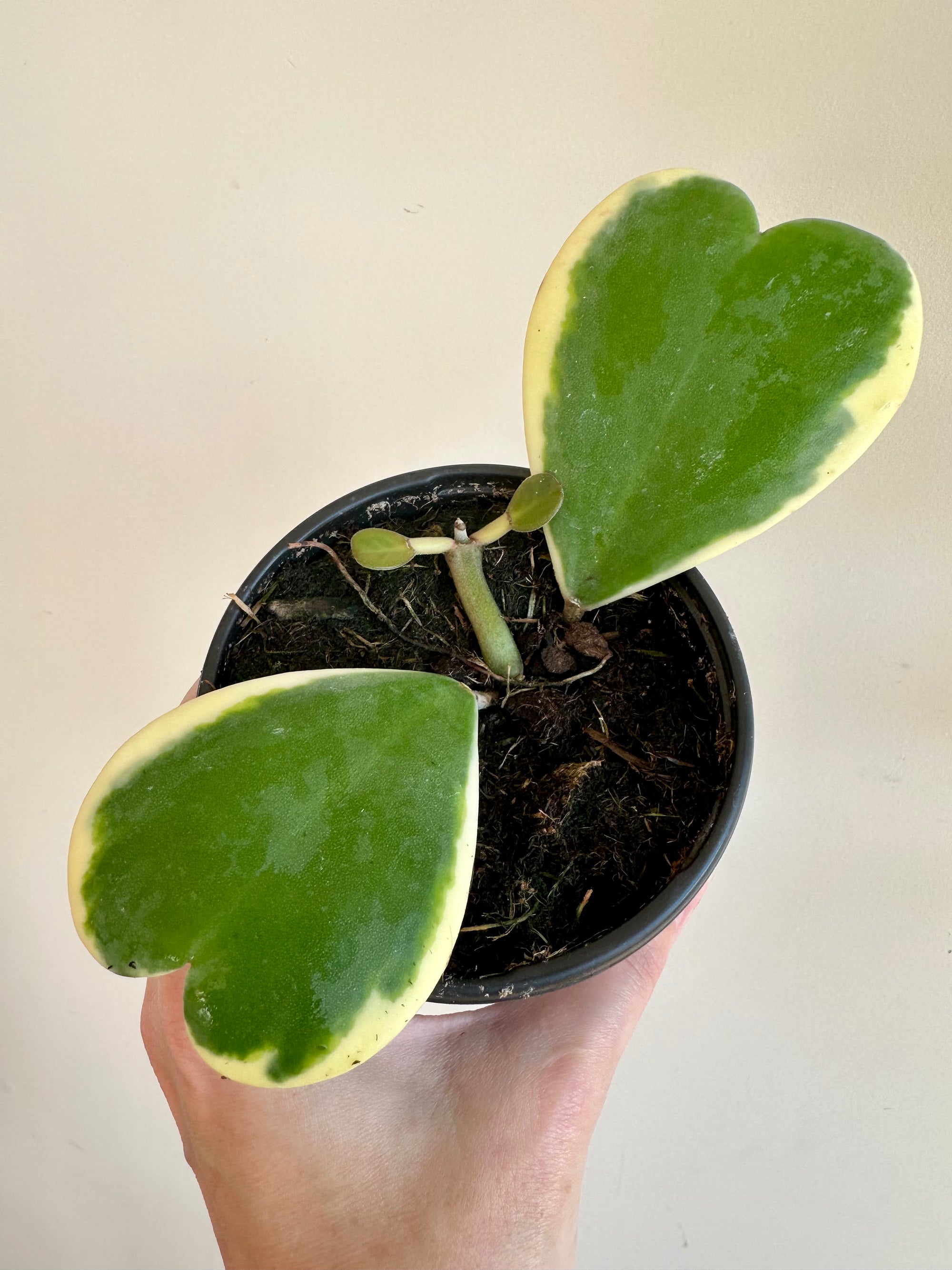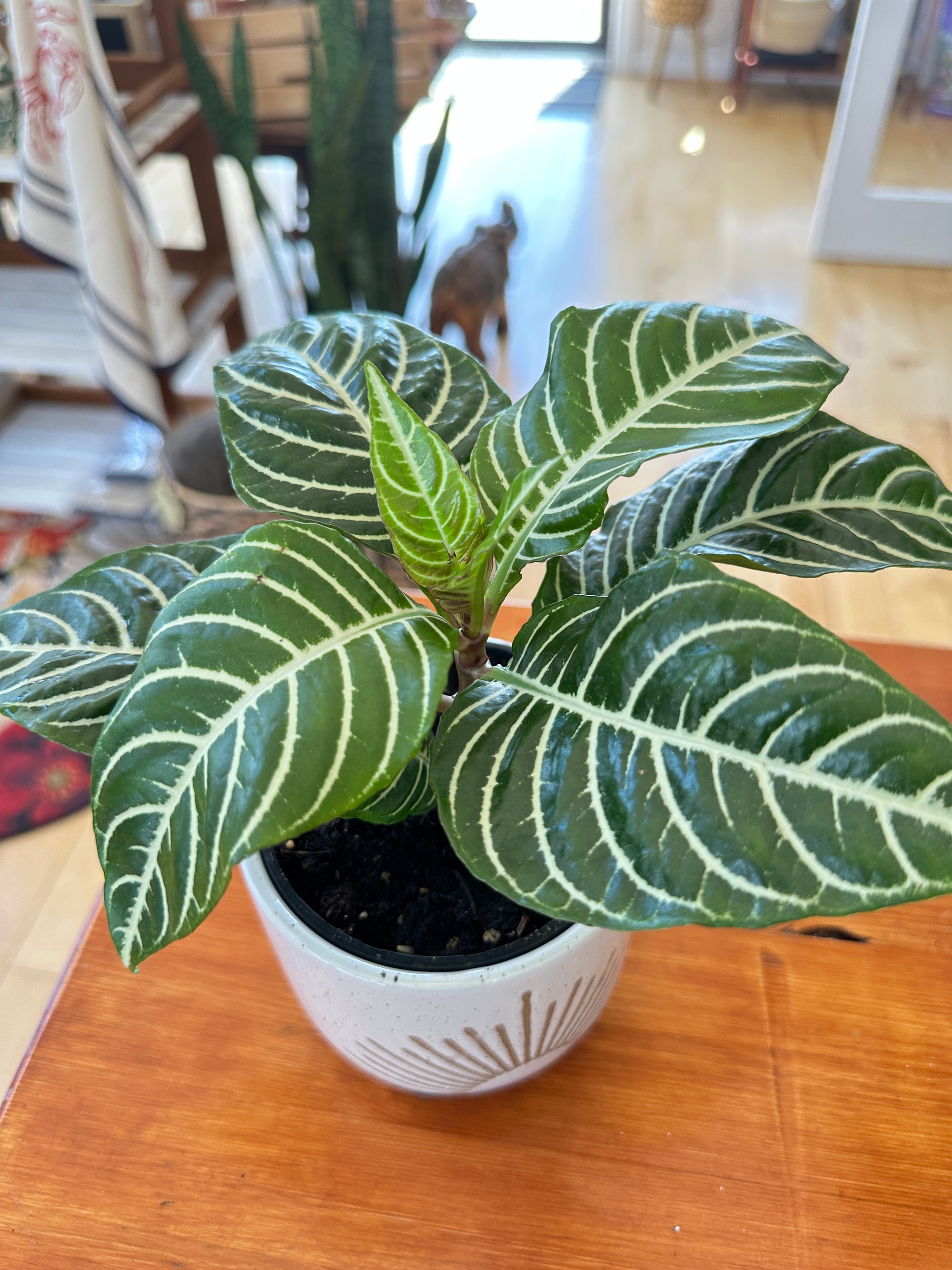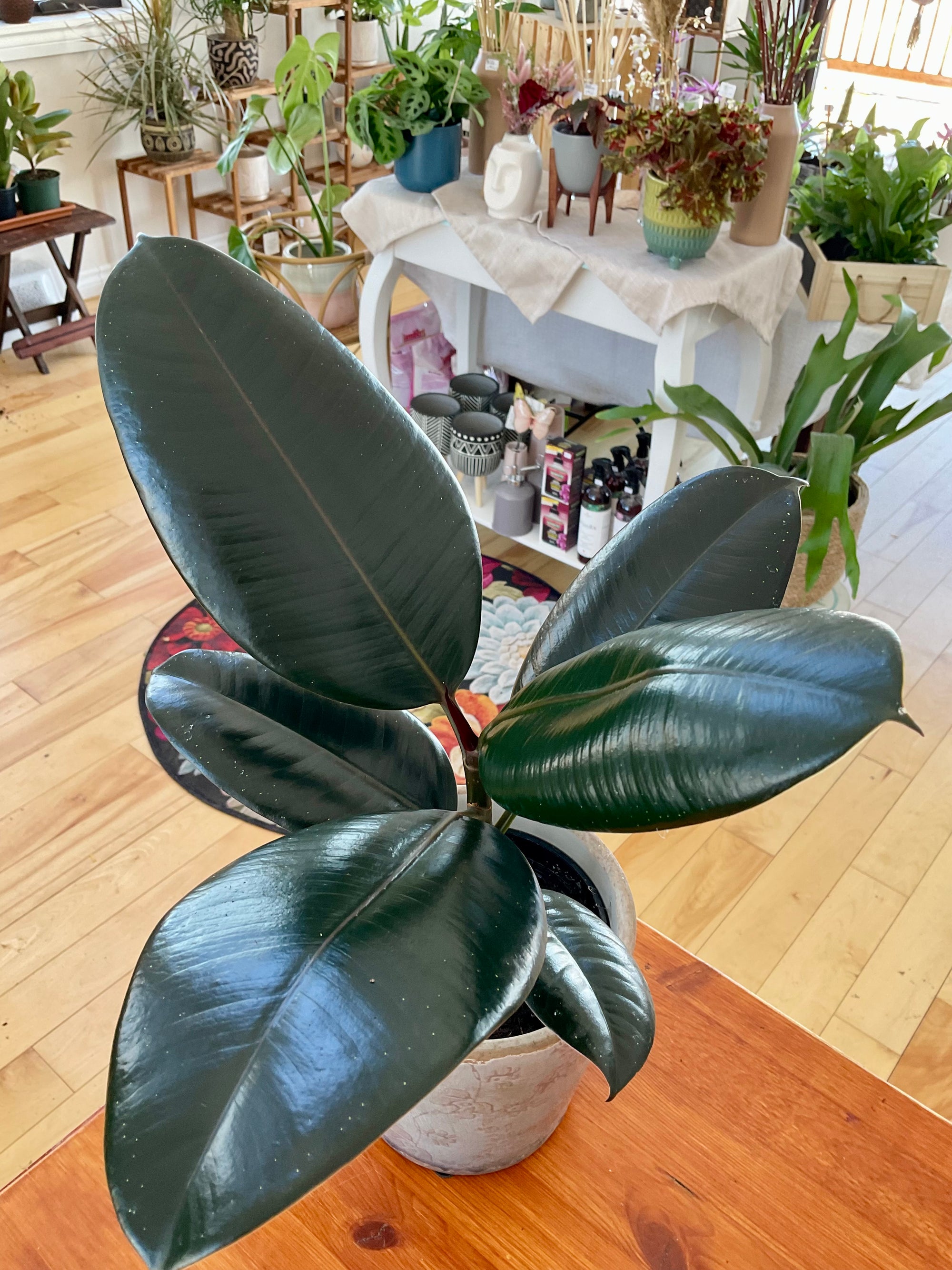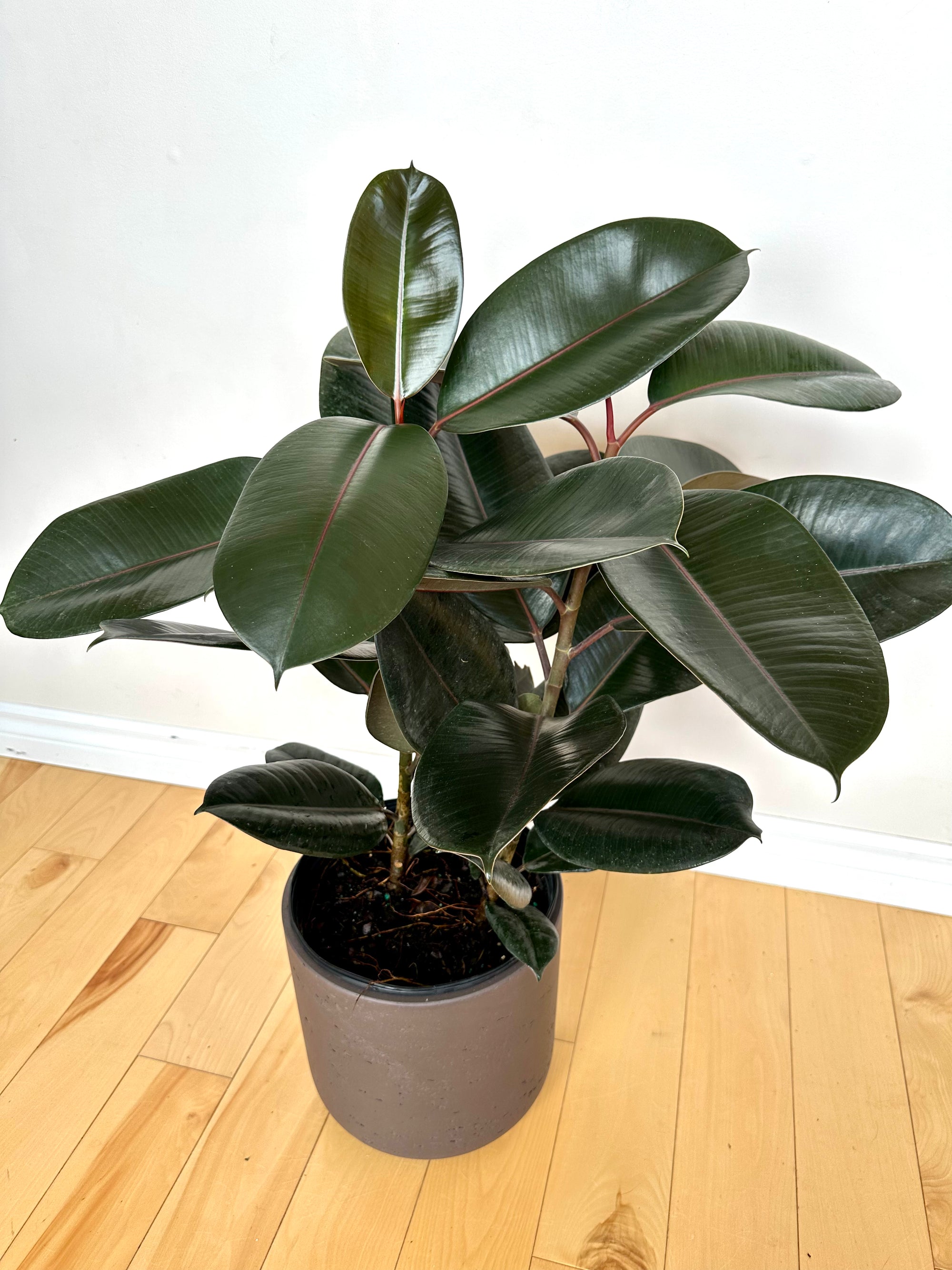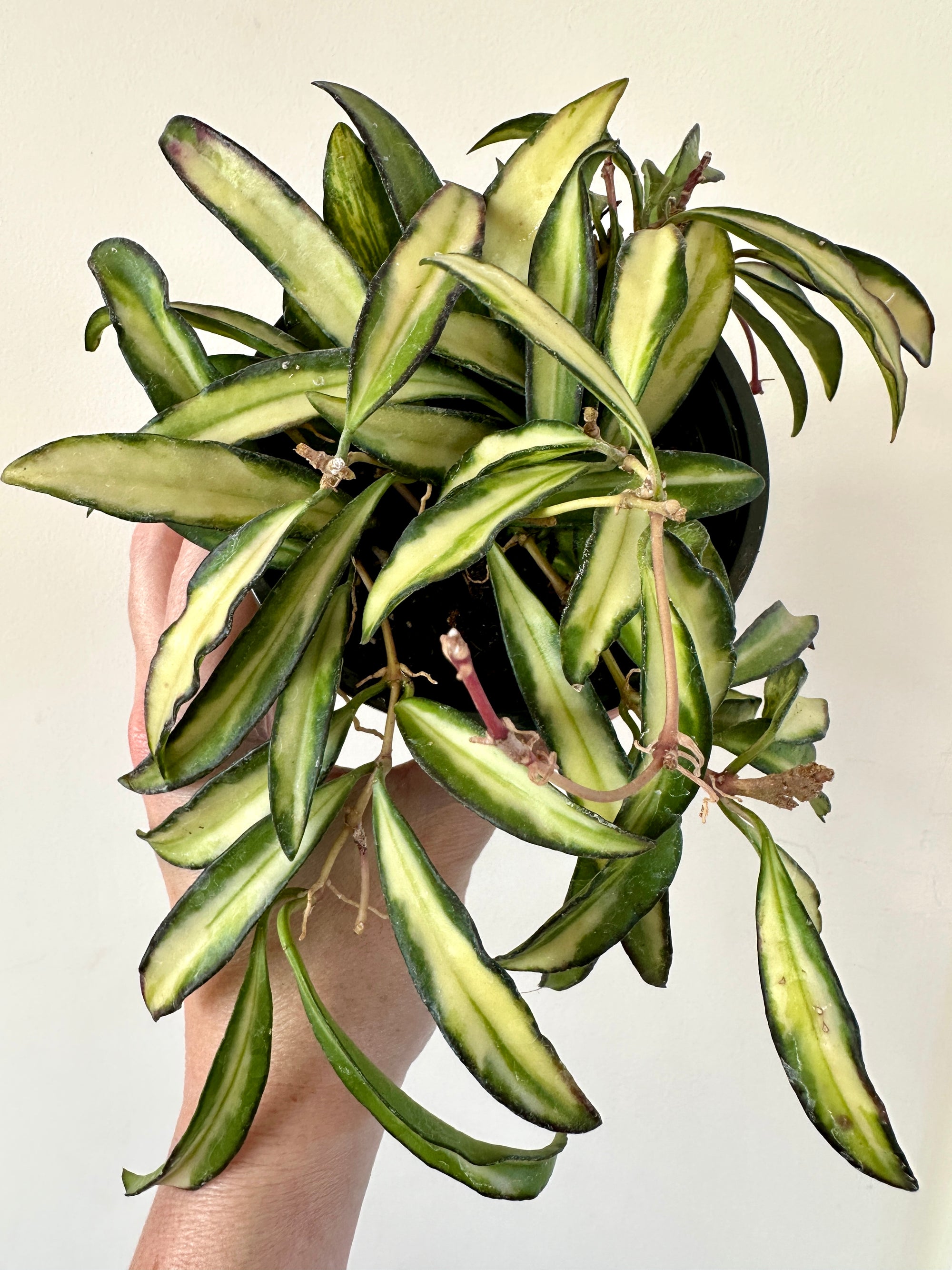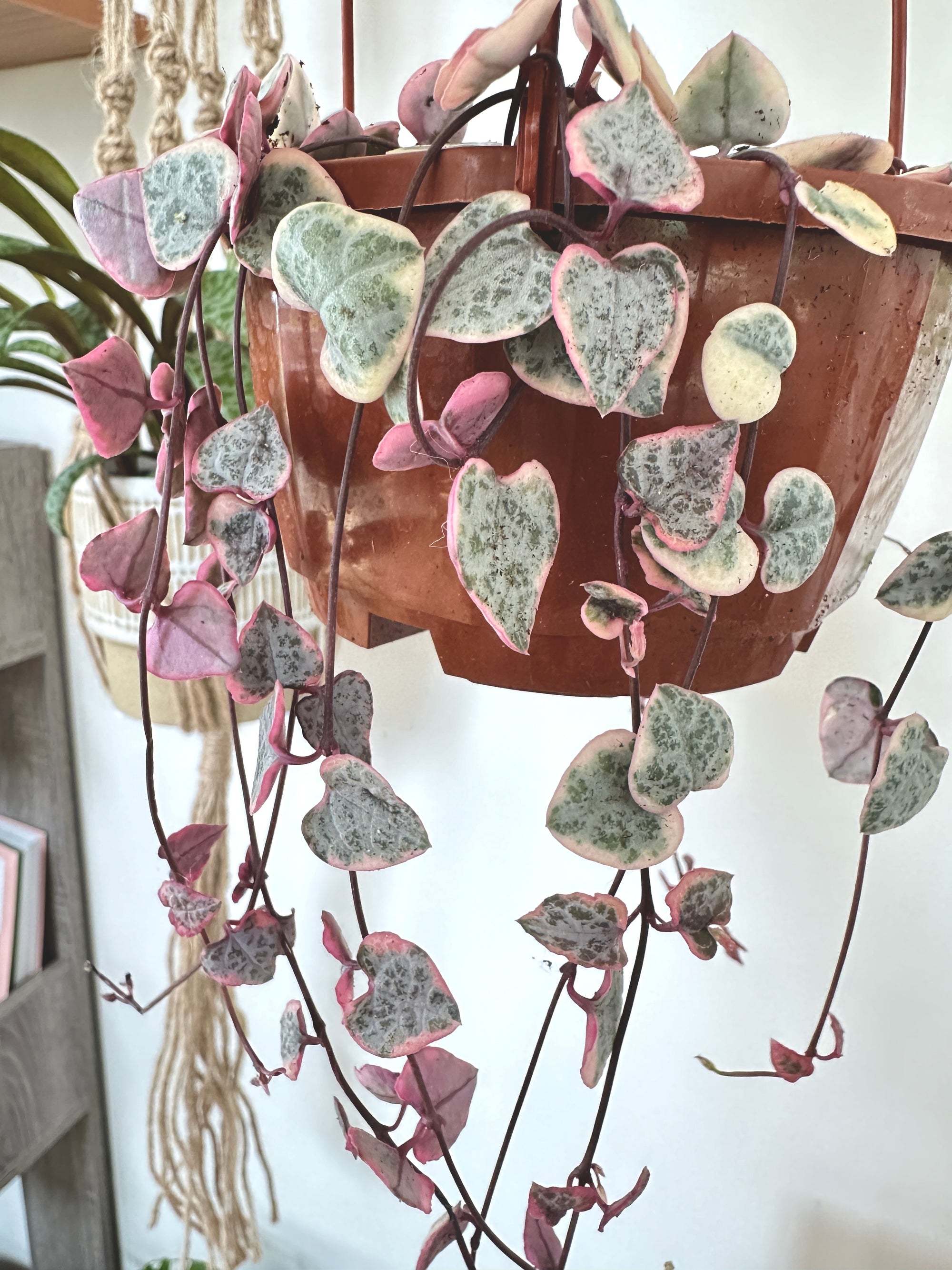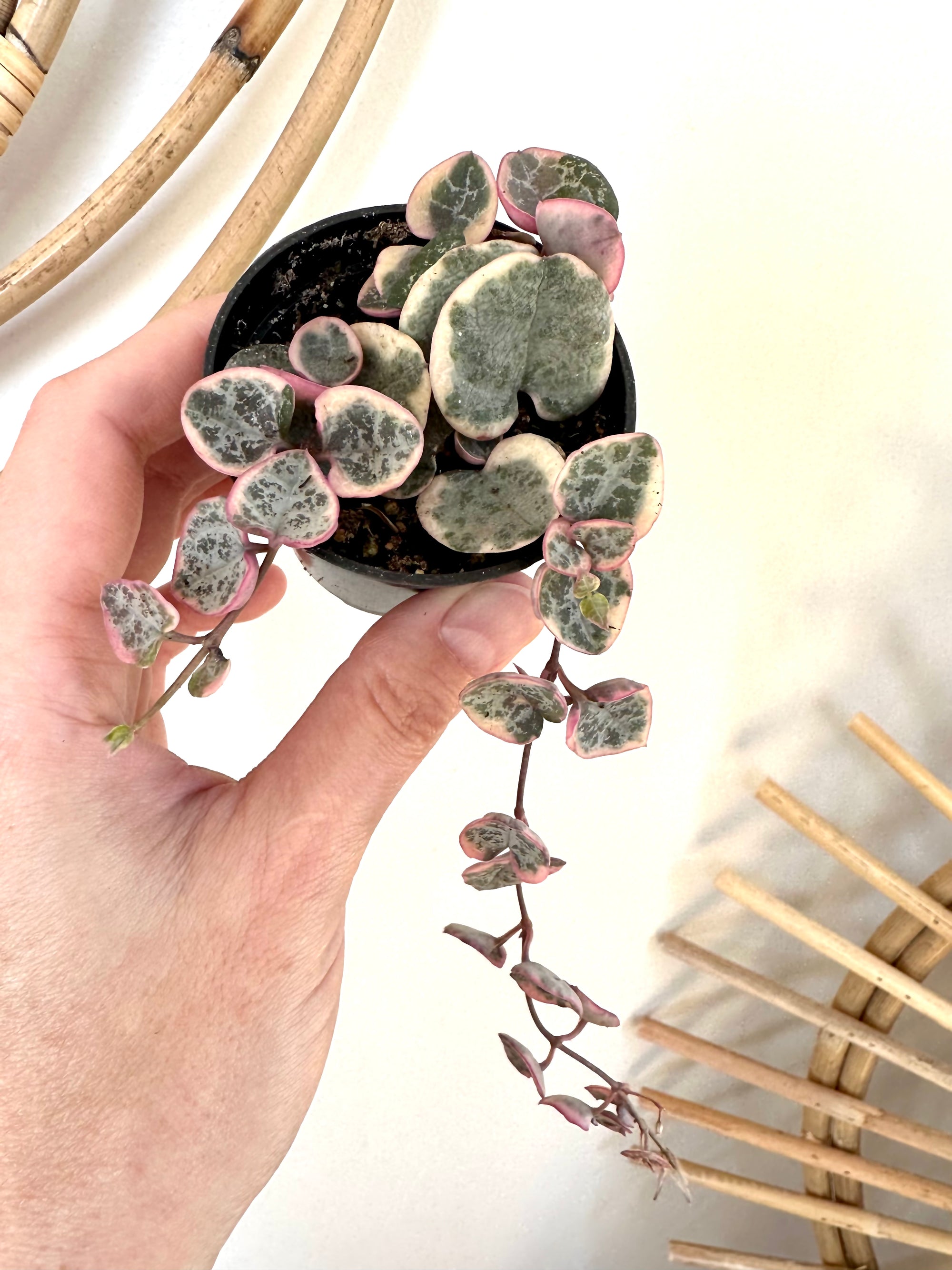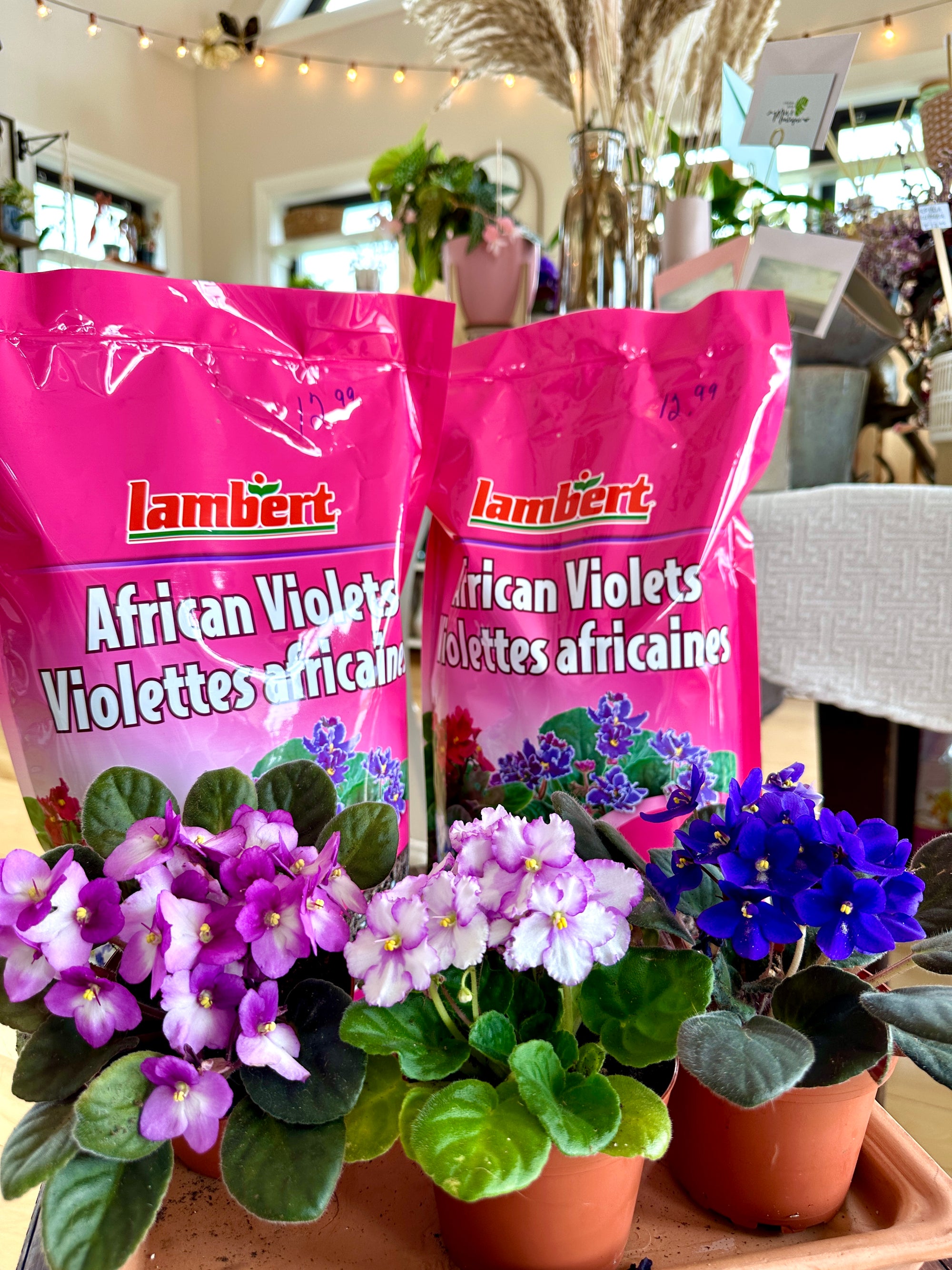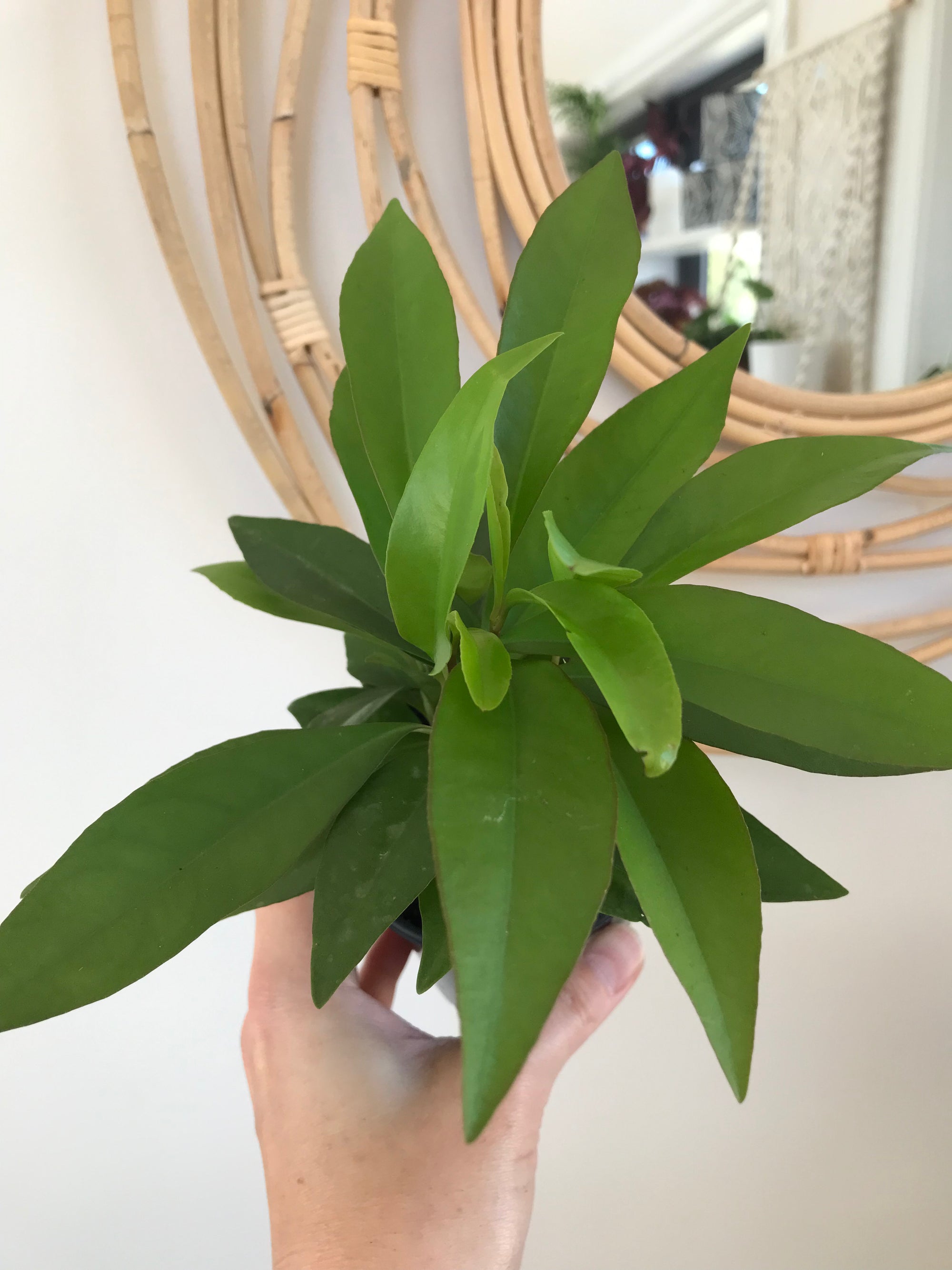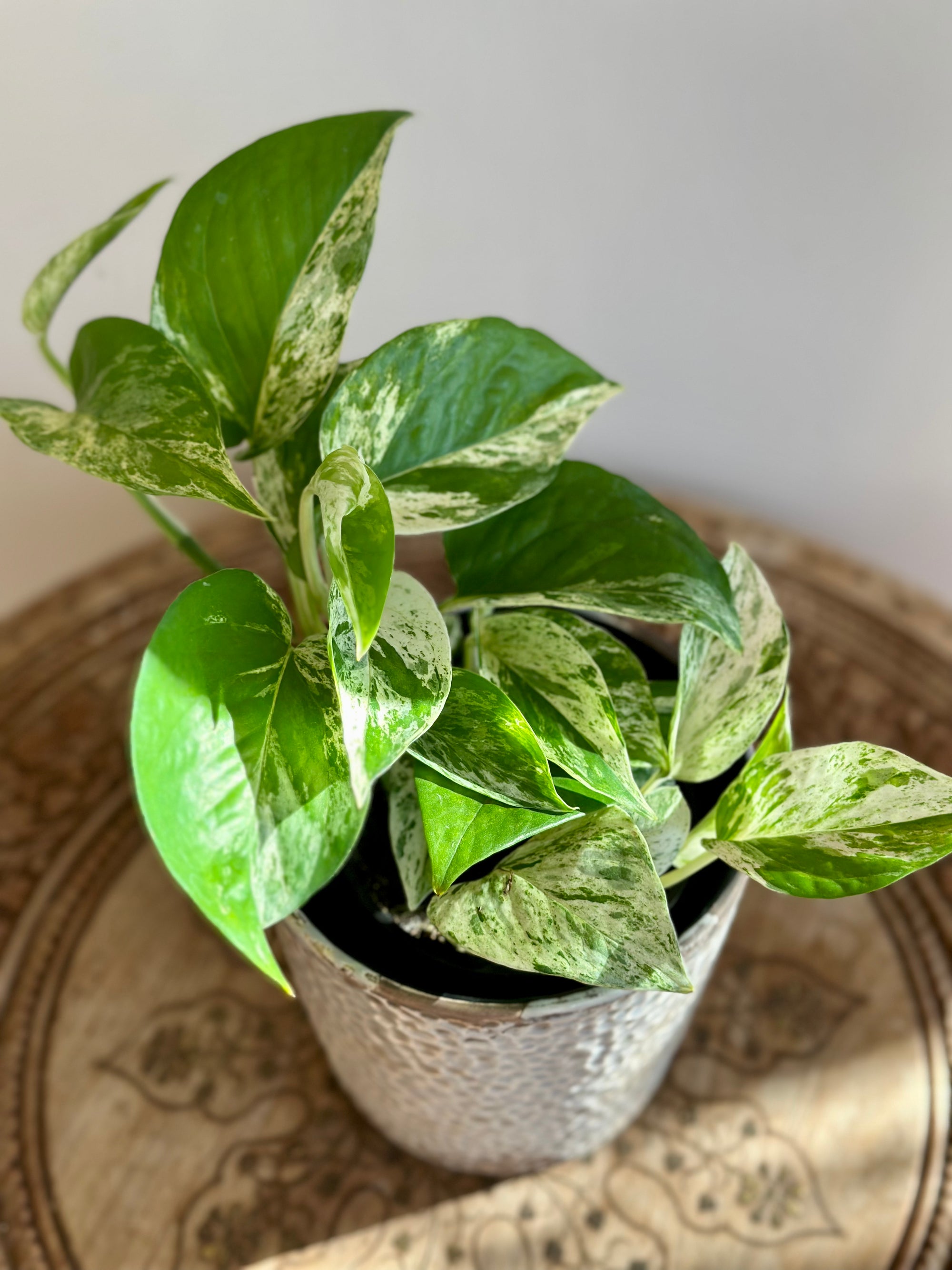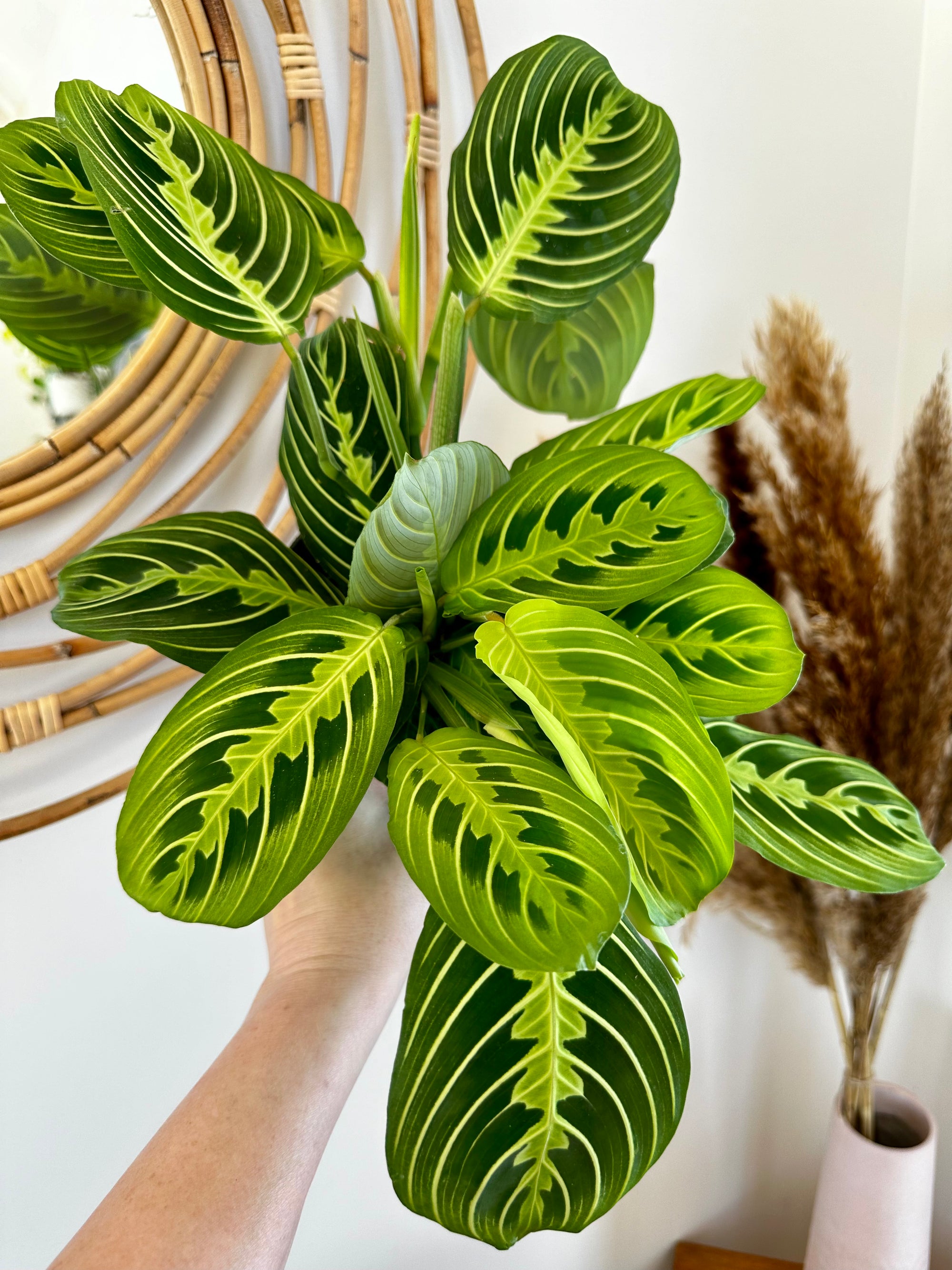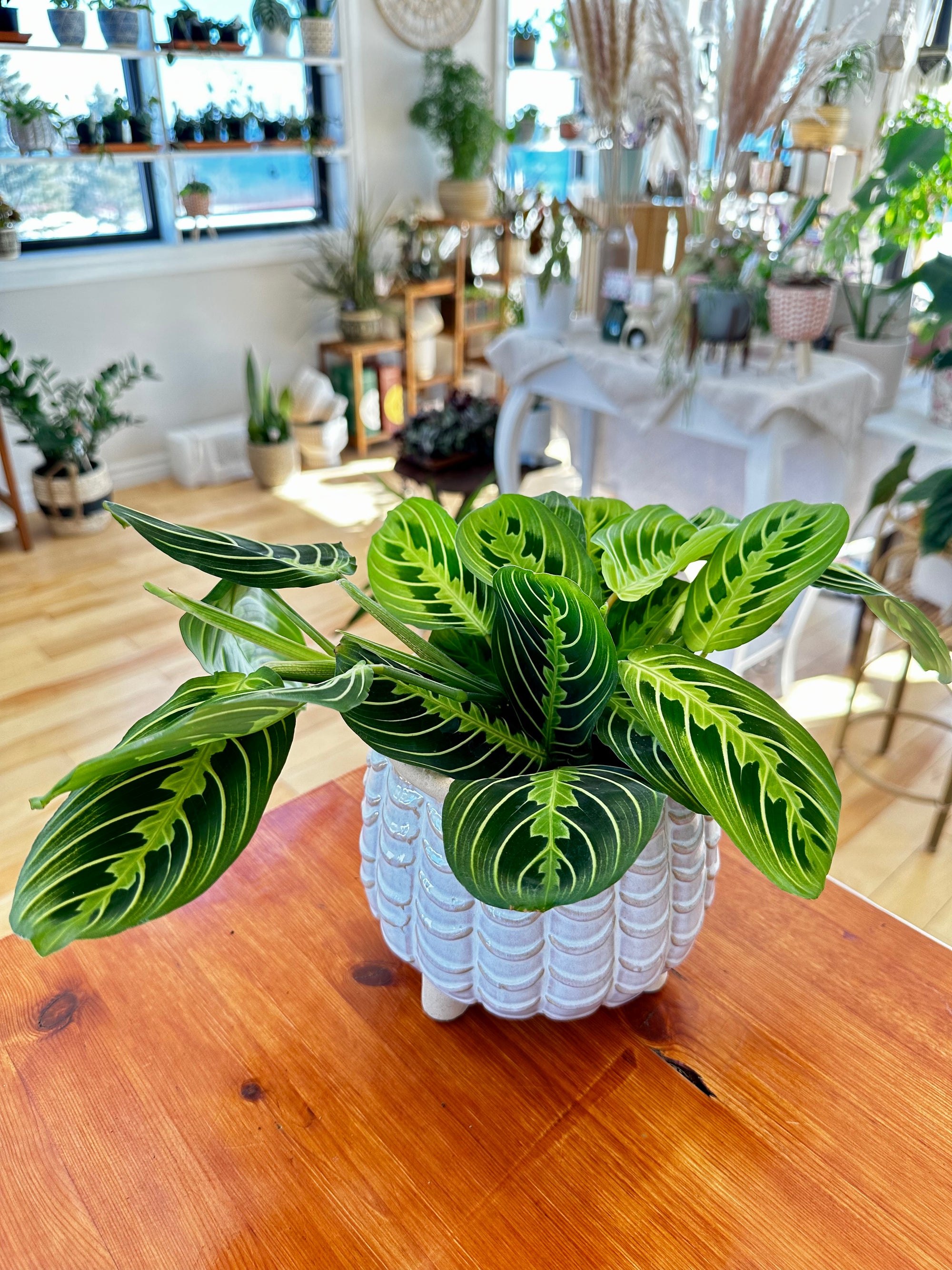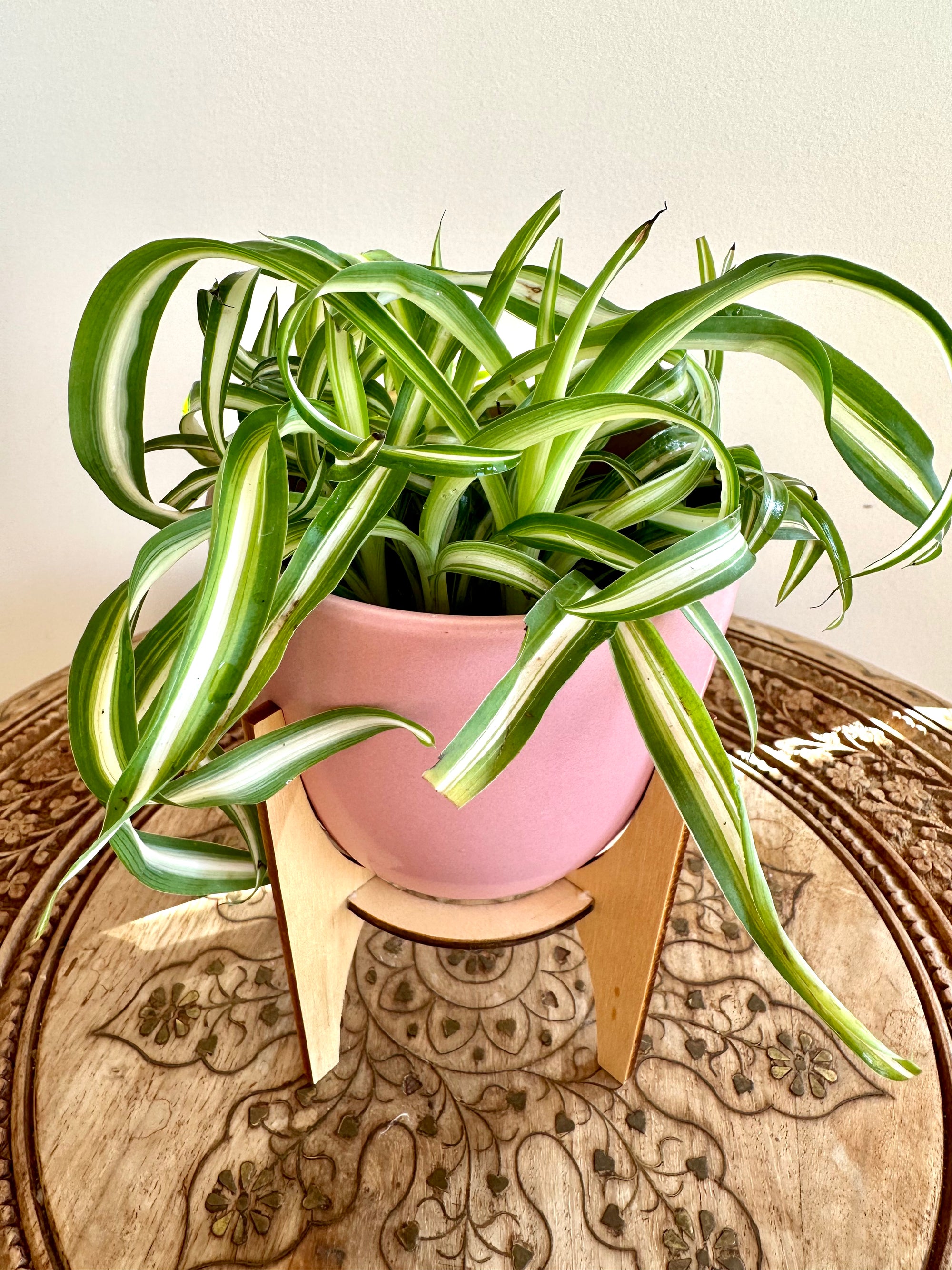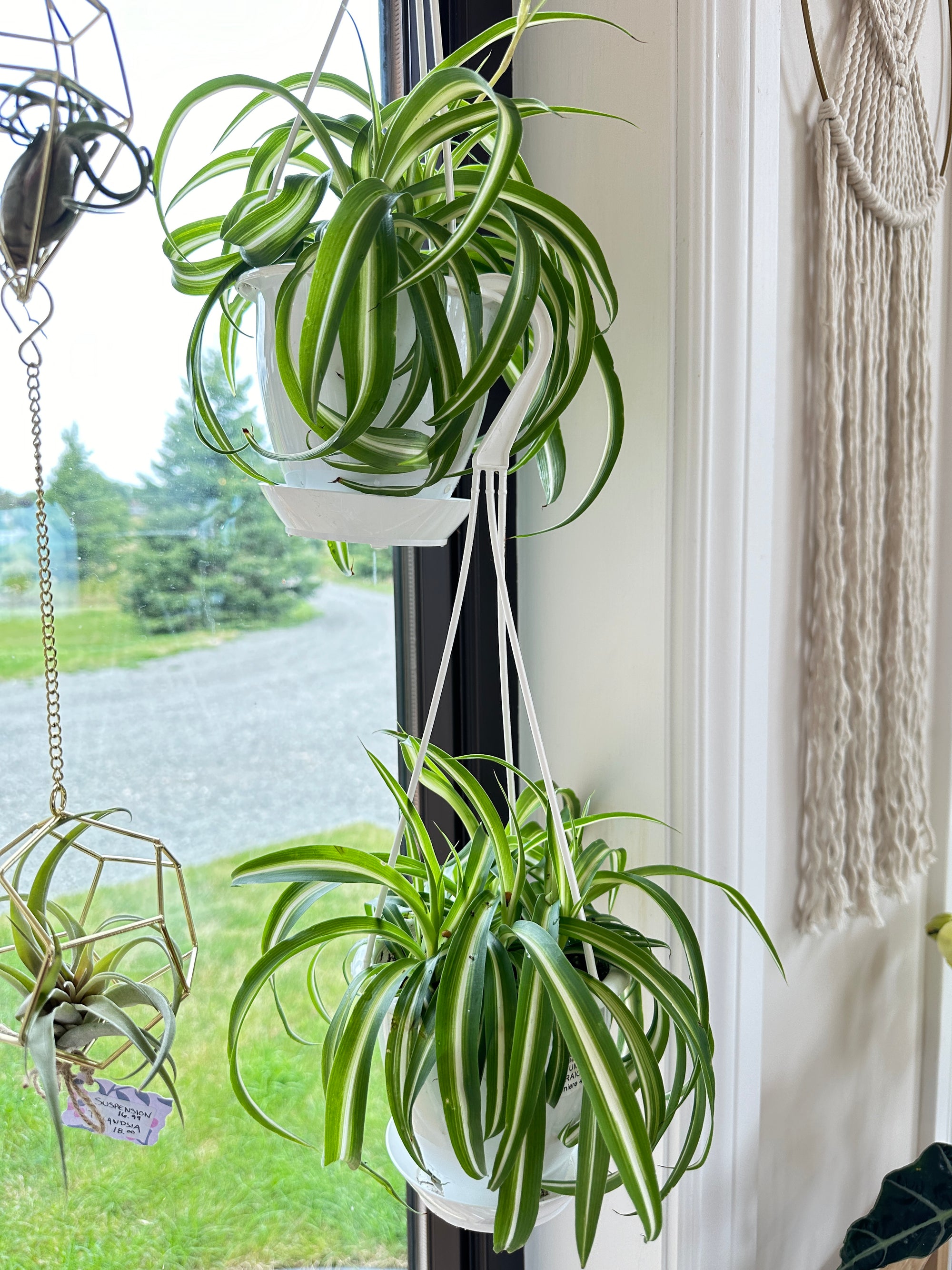Euphorbia lactea 'White ghost'
Euphorbia lactea 'White Ghost' is a rare and spectacular variety of the Euphorbiaceae family. Unlike the traditional Euphorbia lactea, which is green, the 'White Ghost' variety is almost entirely white or cream, sometimes with subtle hints of green or pale pink on the young shoots. This plant has a very sculptural appearance, with its angular, spiny stems, which give it a cactus-like appearance, despite being a euphorbia. The striking contrast of its white stems makes it a highly prized plant in succulent and rare plant collections.
This plant can reach up to 1.5 meters in height indoors and even more outdoors, but its growth is generally quite slow. Like all euphorbias, it produces a white latex that is irritating to the skin and toxic if ingested.
Euphorbia lactea 'White Ghost' Care
Light : Euphorbia 'White Ghost' requires bright light, preferably full sun , to maintain its distinctive white color. It can tolerate indirect light, but this may affect its growth and color. A location near a well-lit window is ideal.
Watering : Like many succulents, Euphorbia 'White Ghost' prefers to be watered lightly. Wait until the soil is completely dry before watering. Water sparingly in summer (every 10 to 14 days), but reduce watering drastically in winter as it enters a dormant period. Avoid overwatering, which can cause root rot.
Humidity : This plant tolerates dry air well, and humidity is not a critical factor. It adapts perfectly to indoor environments, even with low humidity.
Temperature : Euphorbia lactea 'White Ghost' prefers warm temperatures, between 18 and 26°C. It can tolerate cooler temperatures, but does not tolerate frost (avoid exposure to temperatures below 10°C).
Substrate : Use a well-draining substrate, such as a special cactus and succulent mix, or a lightweight potting soil with added sand or perlite to improve drainage. Good drainage is essential to prevent root rot.
Fertilization : This plant does not need much fertilizer. You can give it a light cactus or succulent fertilizer diluted during the growing season (spring and summer), about once a month. It is not necessary to fertilize during the winter.
Repotting : Repot Euphorbia 'White Ghost' every 2 to 3 years, or when it outgrows its pot. Repotting should be done in the spring. Choose a slightly larger pot with drainage holes to prevent waterlogging.
Pruning : Euphorbia lactea 'White Ghost' does not require regular pruning, but you can cut off damaged or unwanted stems. Wear gloves when pruning to avoid contact with the irritating sap.
Propagation : The plant can be propagated by cuttings, although this requires some precautions. Cut a healthy stem, let it dry for several days to allow the wound to heal, then plant it in a well-drained substrate. Wear gloves when doing this, as the sap can be irritating.
Toxicity : Like all euphorbias, Euphorbia 'White Ghost' is toxic . Its milky sap can cause skin and eye irritation, and it is toxic if ingested. It is therefore important to handle it with care, wearing gloves, and to keep it out of reach of children and pets.
Euphorbia lactea 'White Ghost' is a unique houseplant that catches the eye with its graphic shape and white color.

